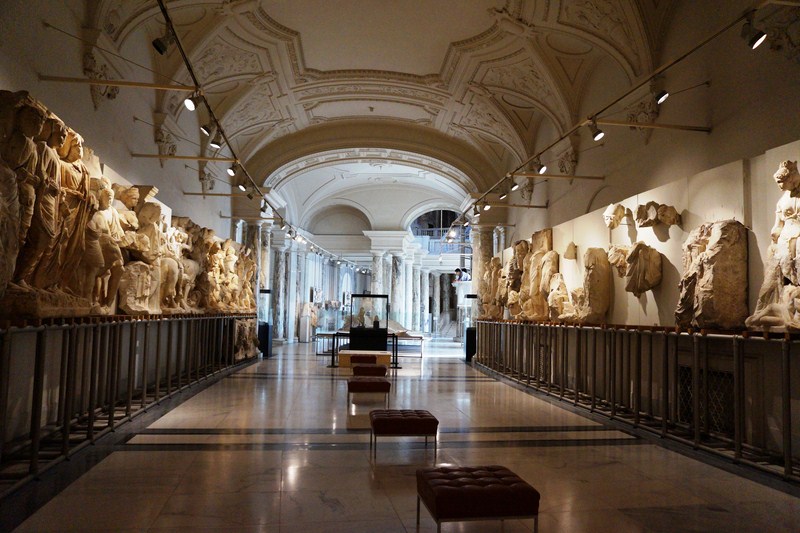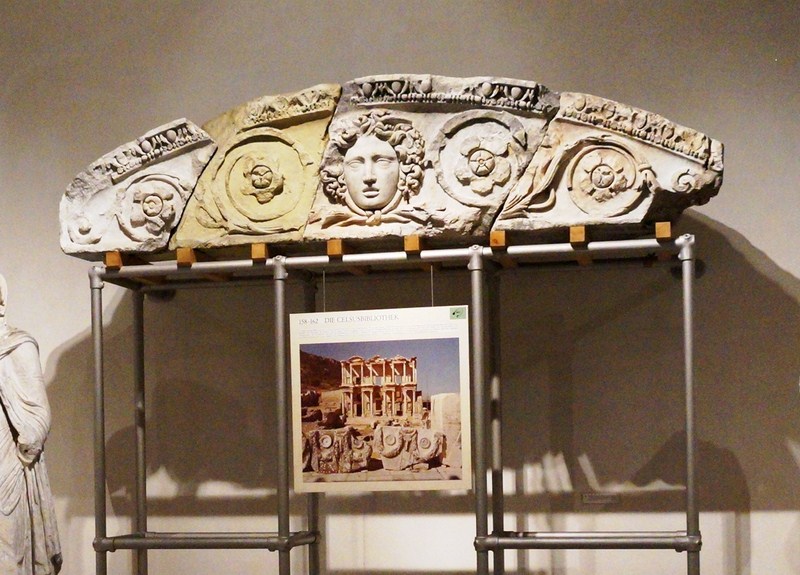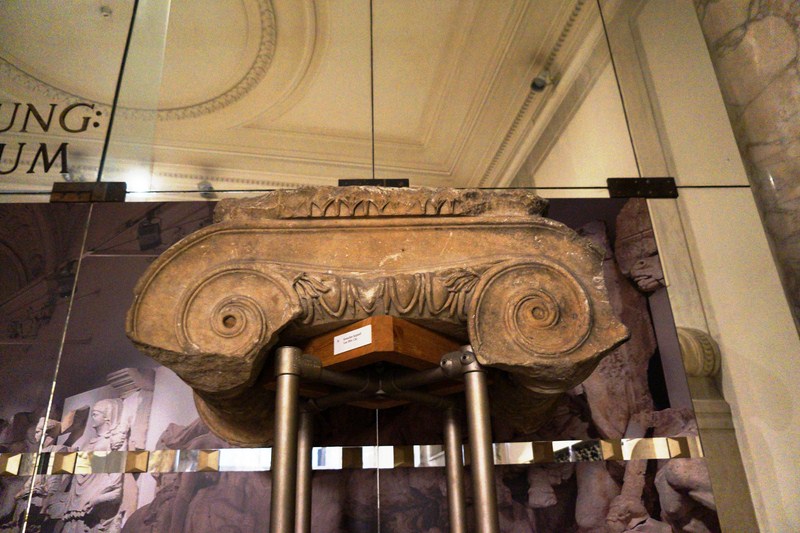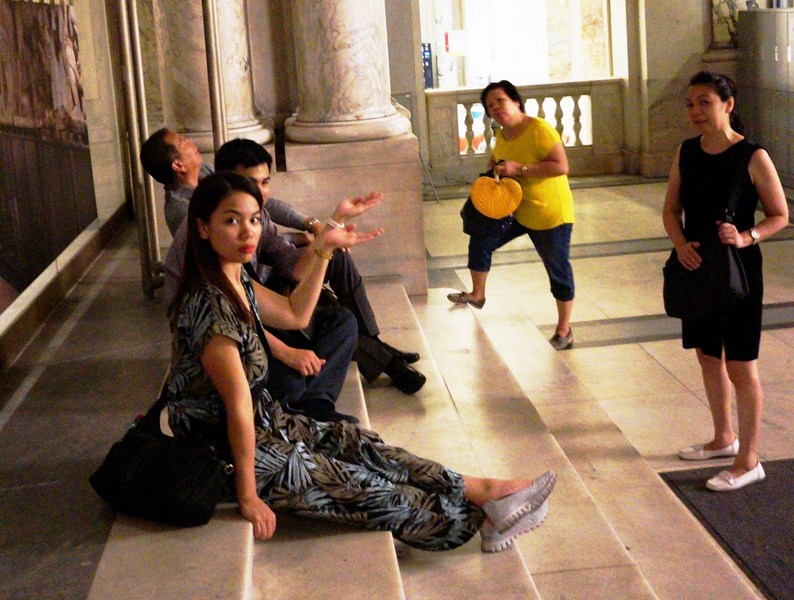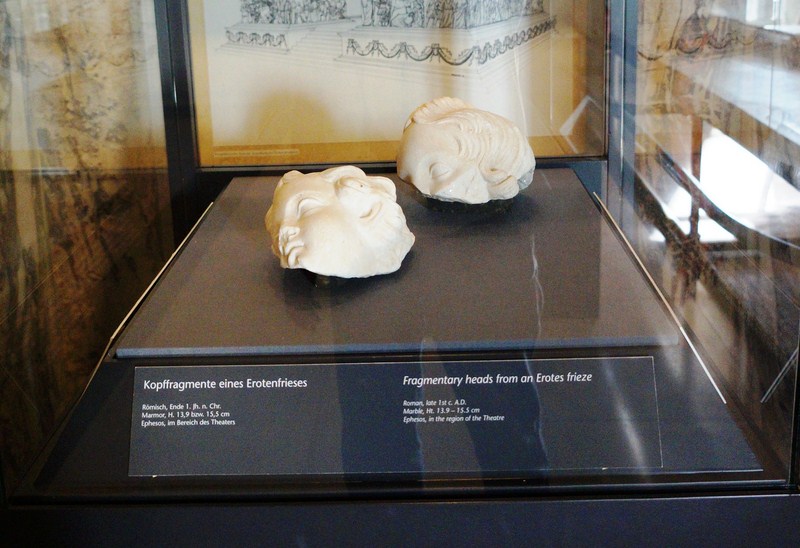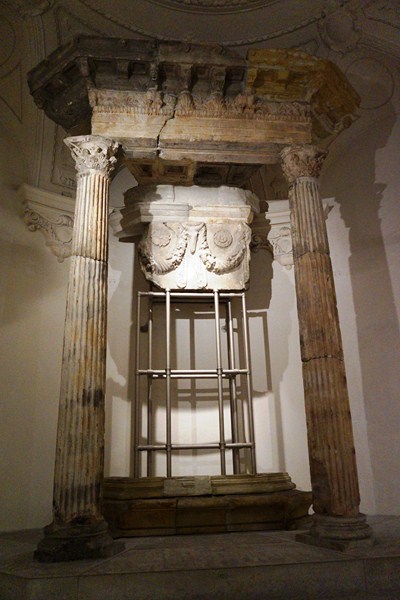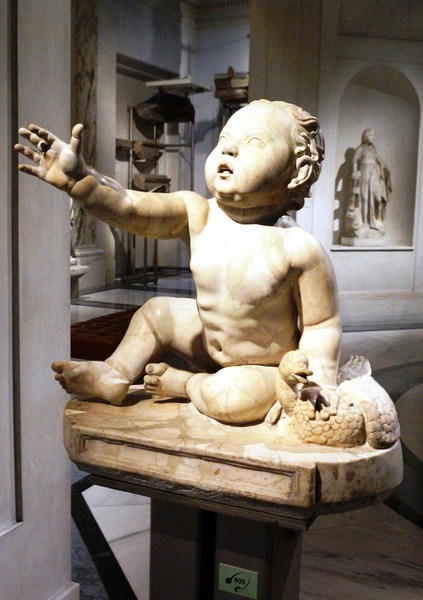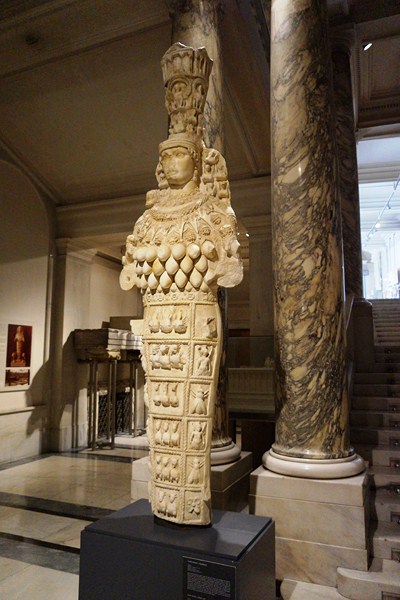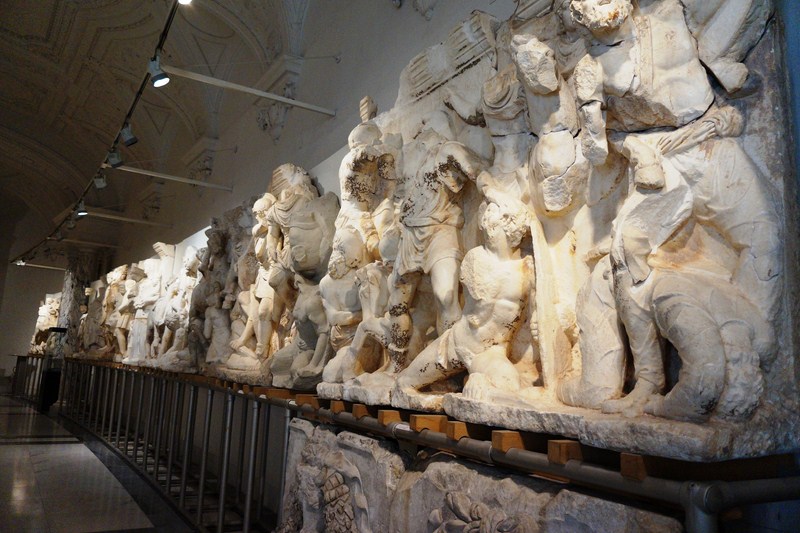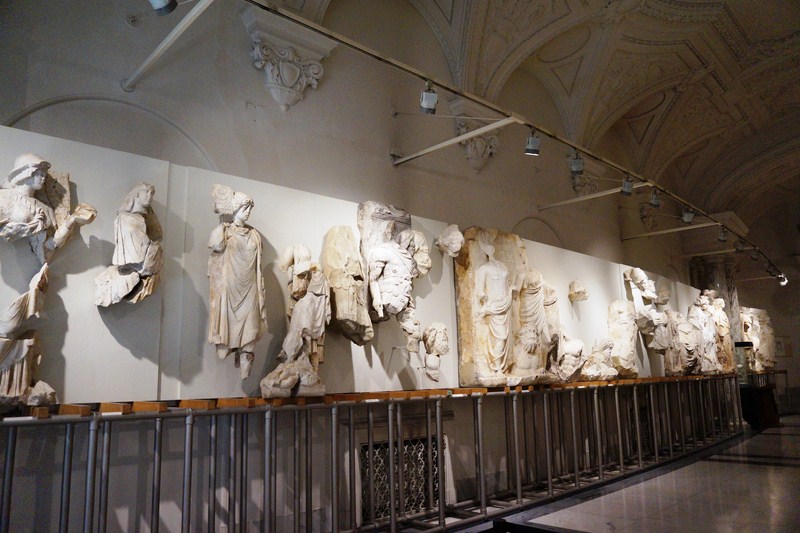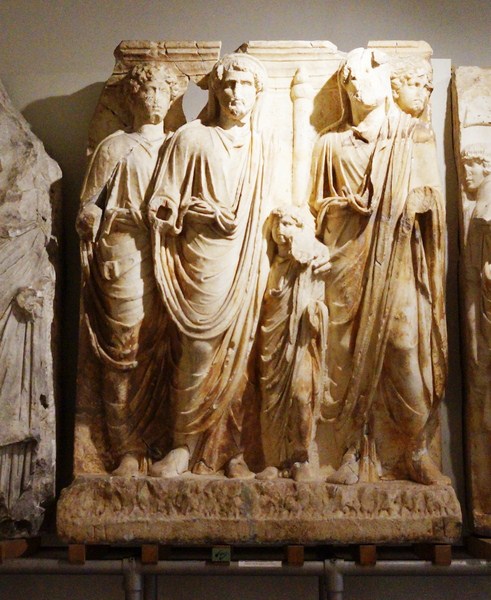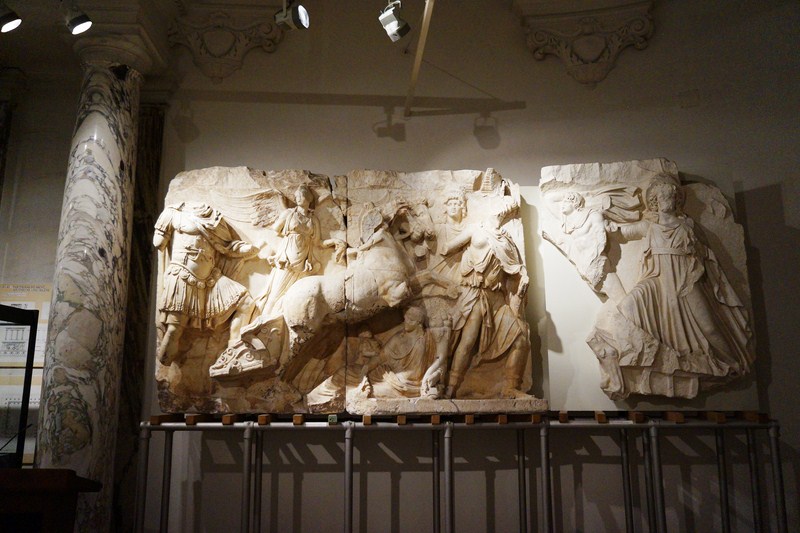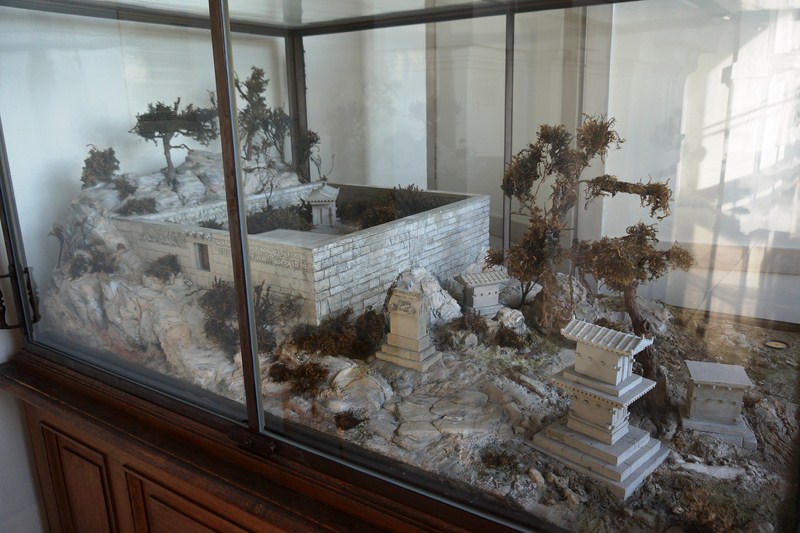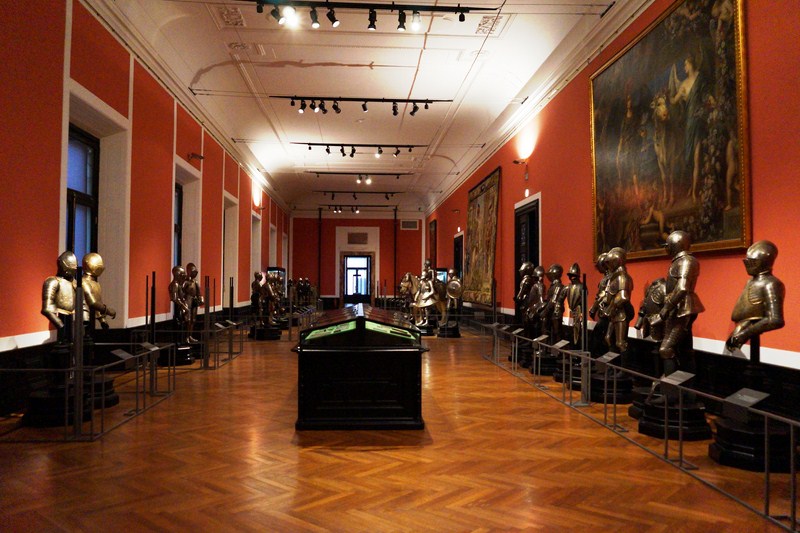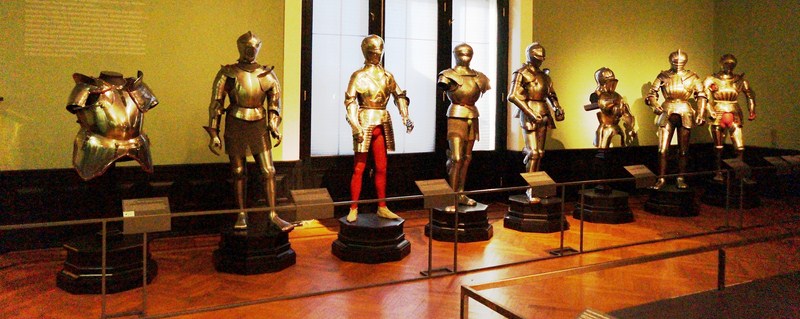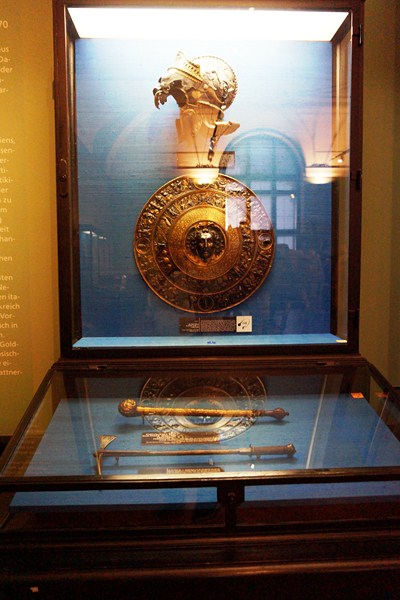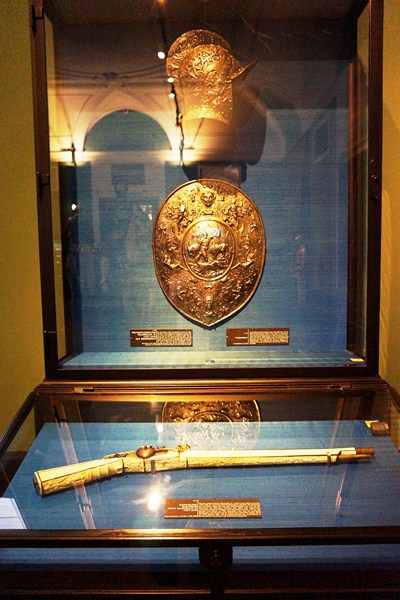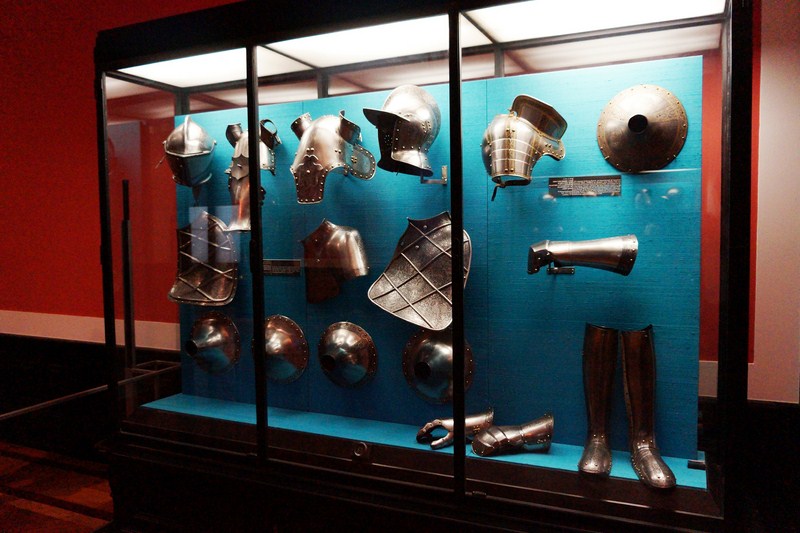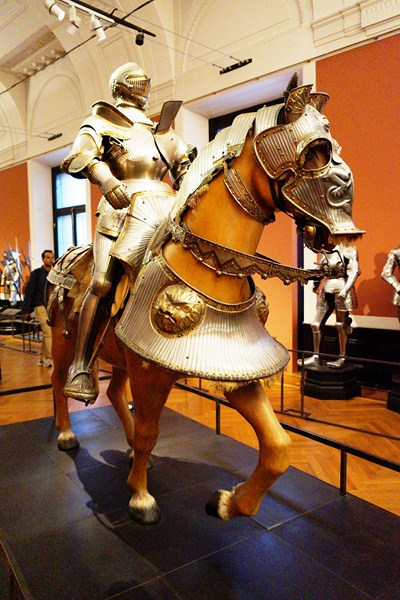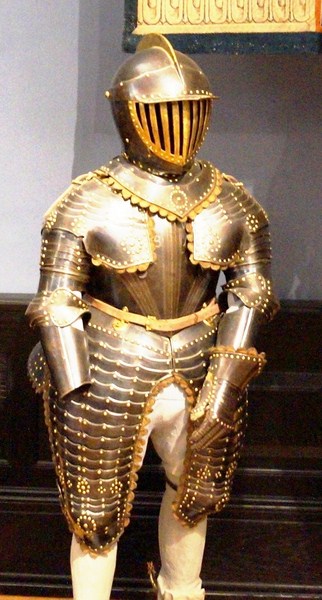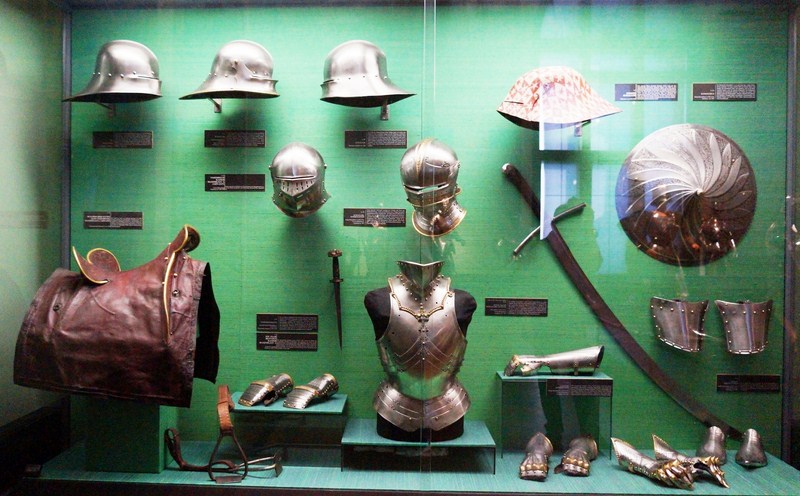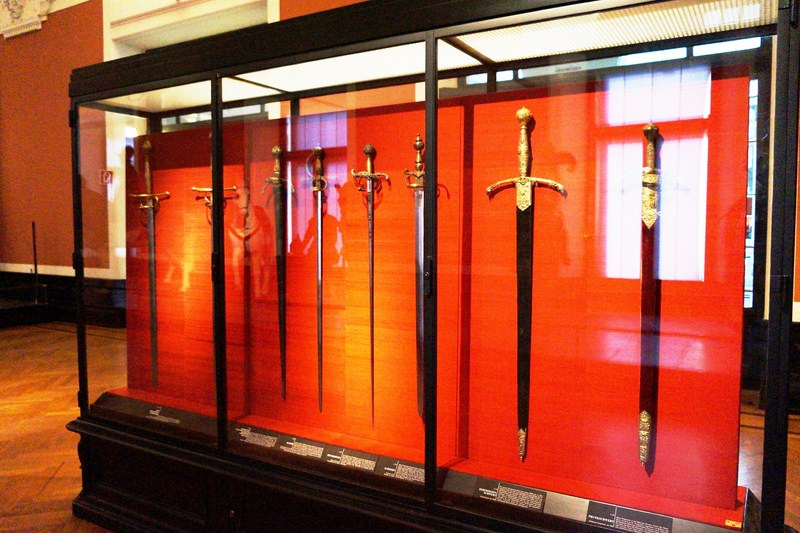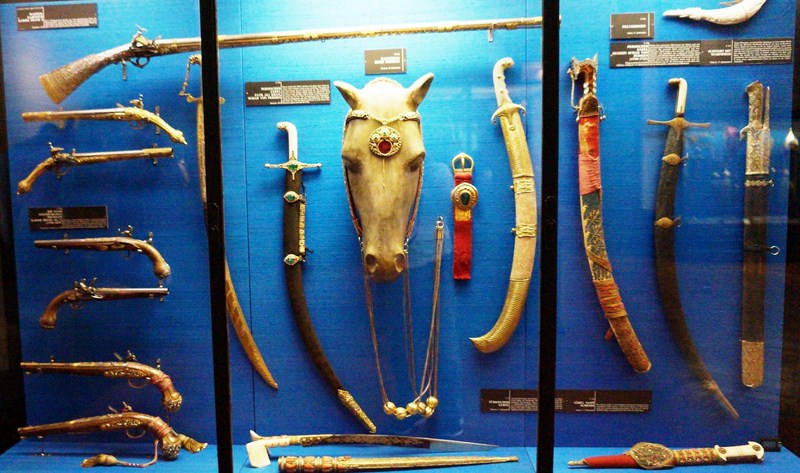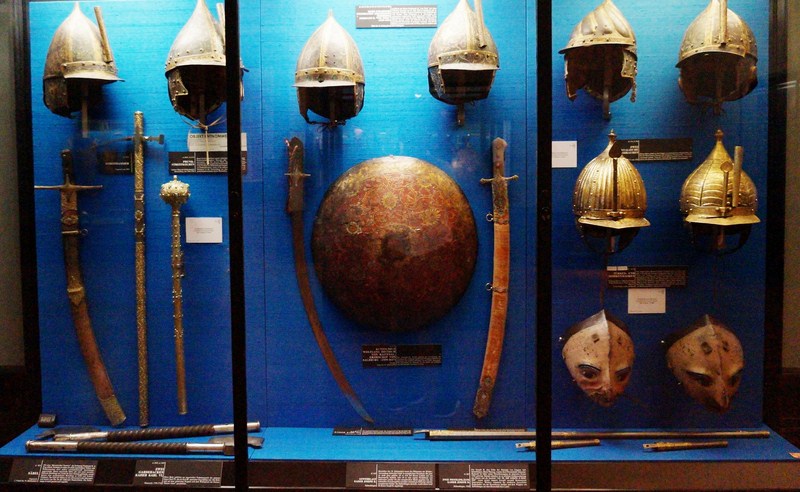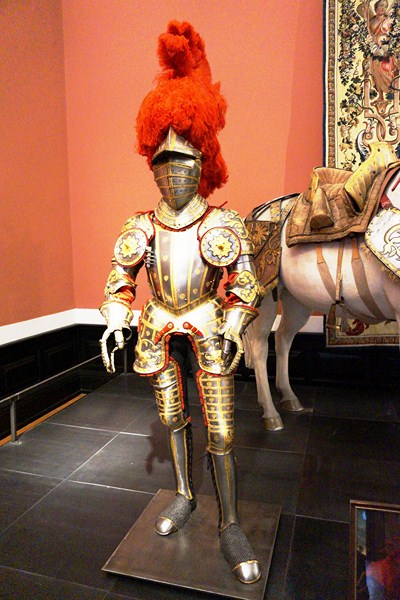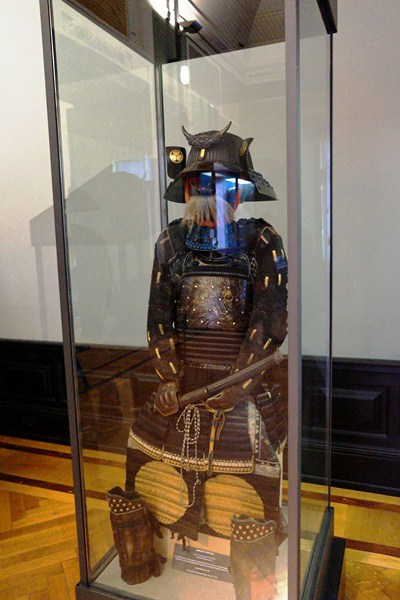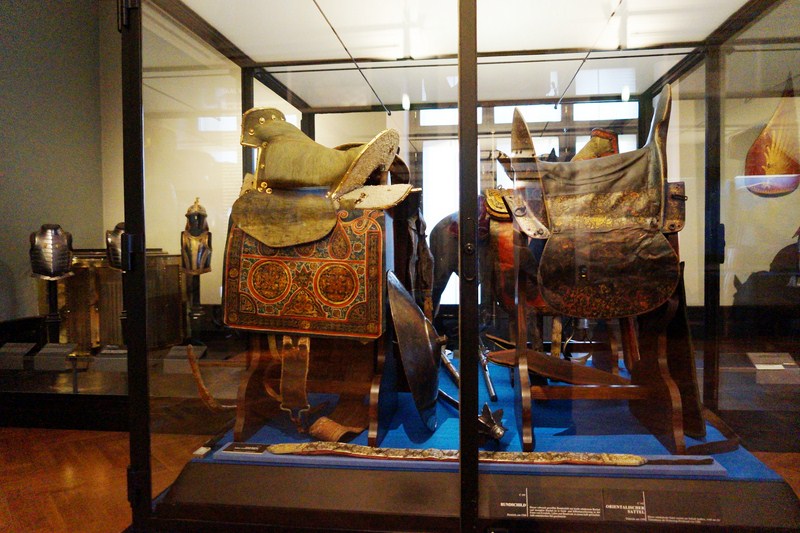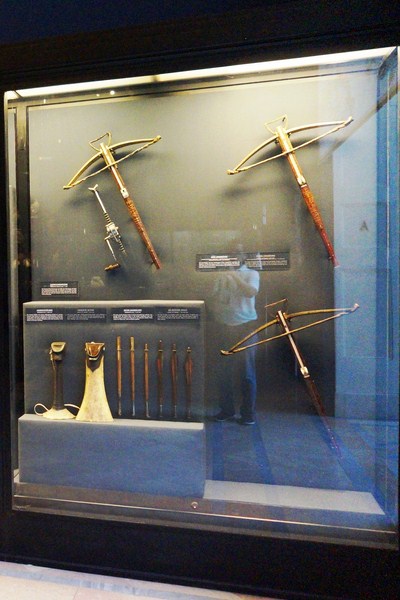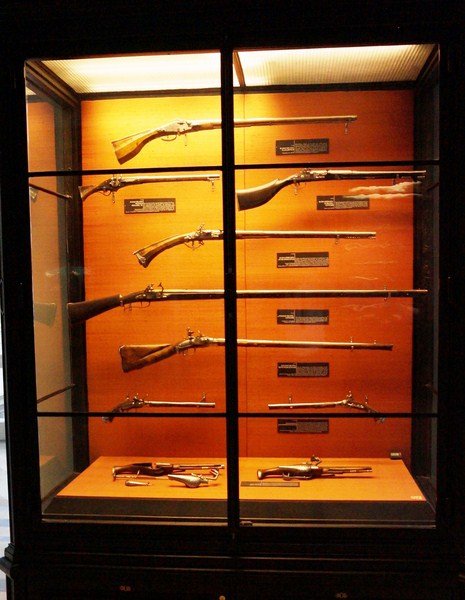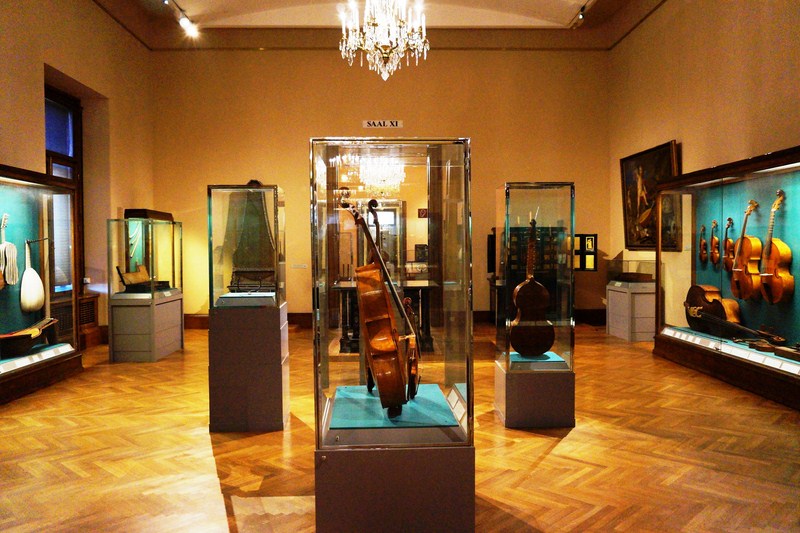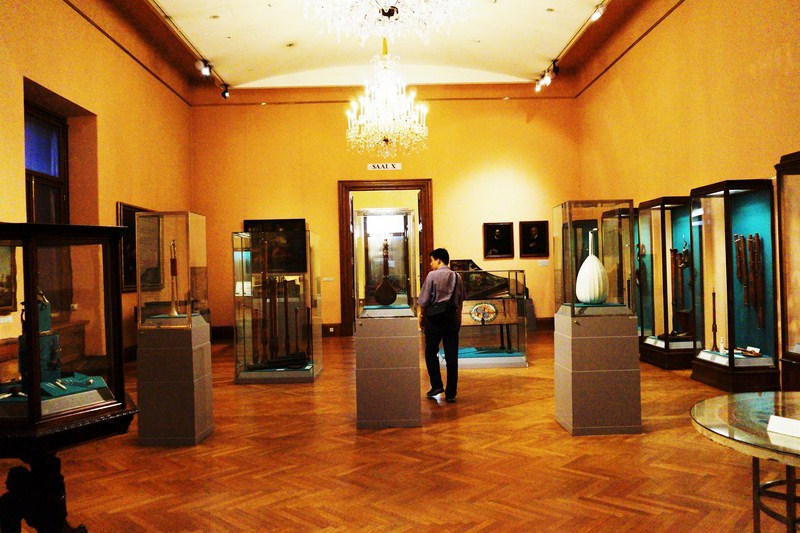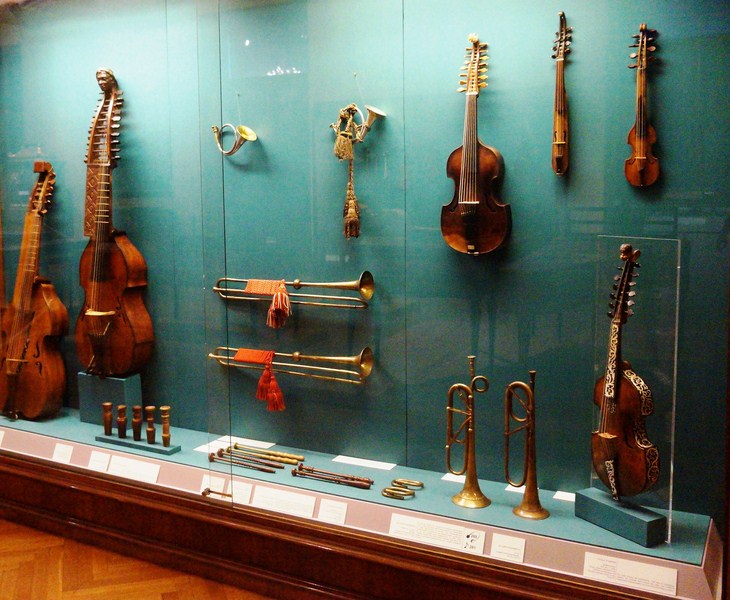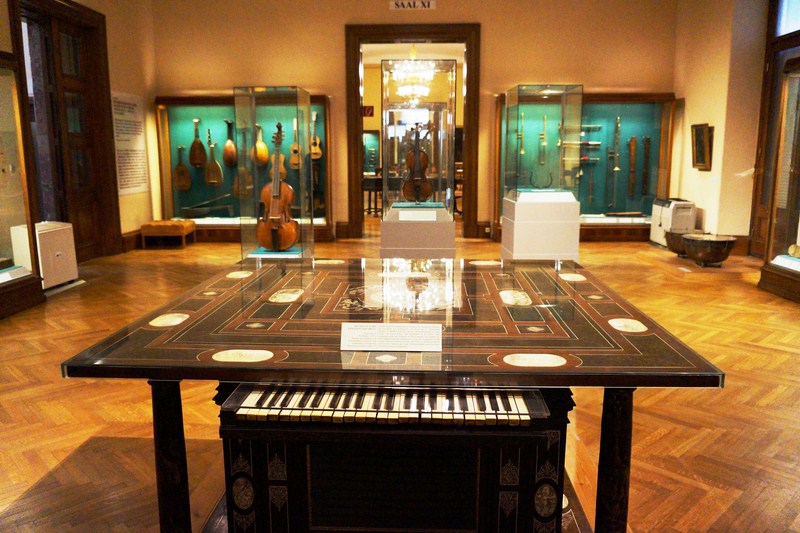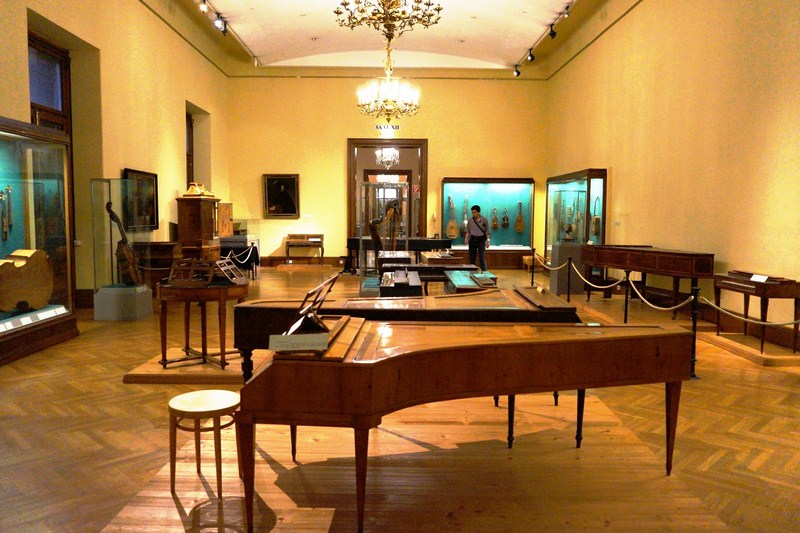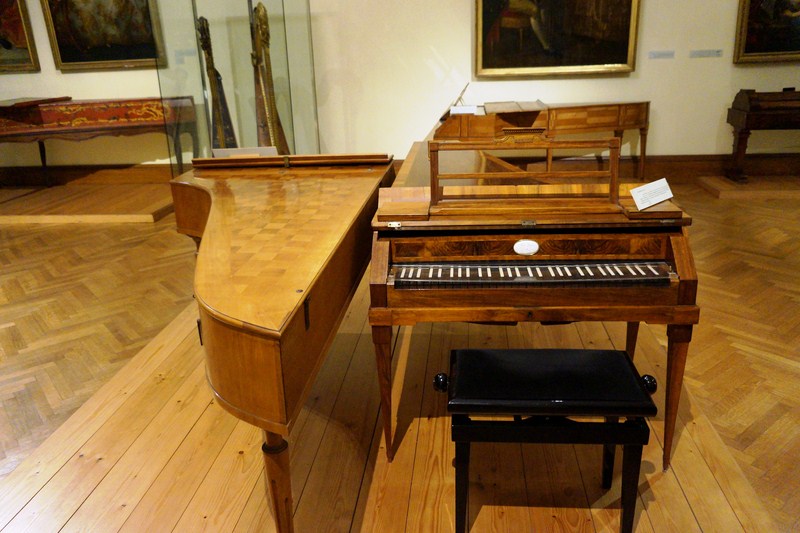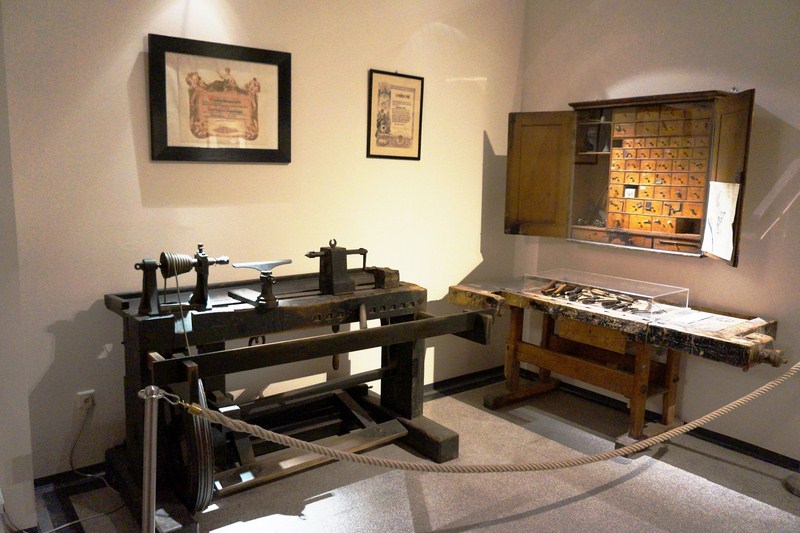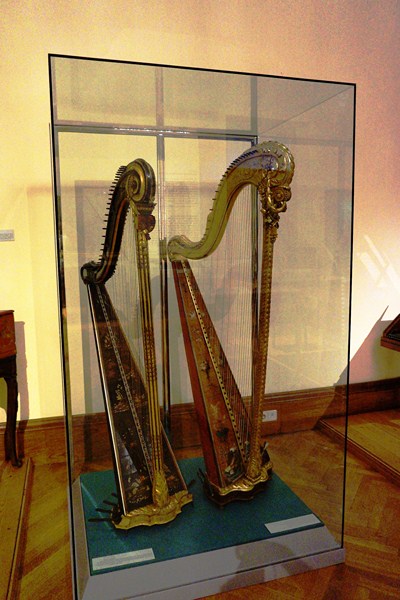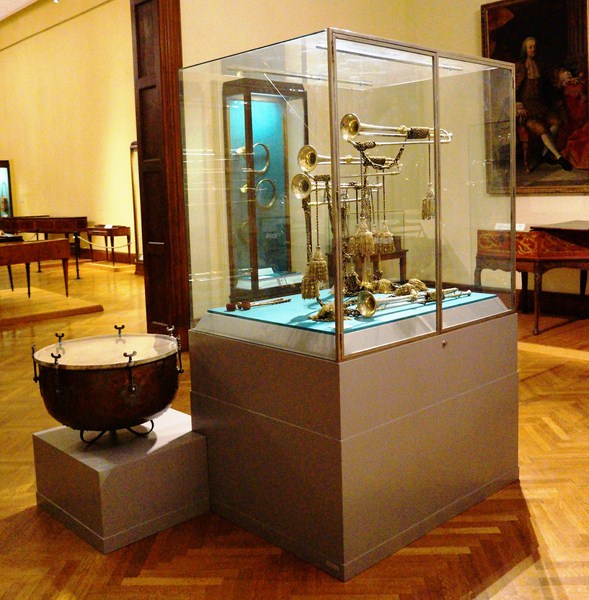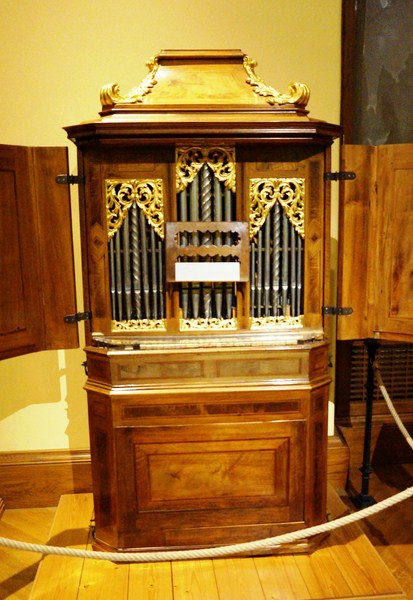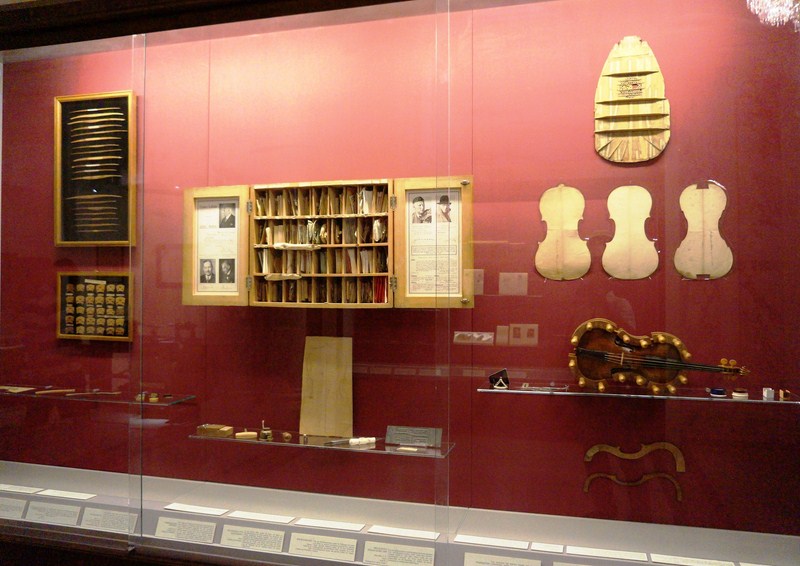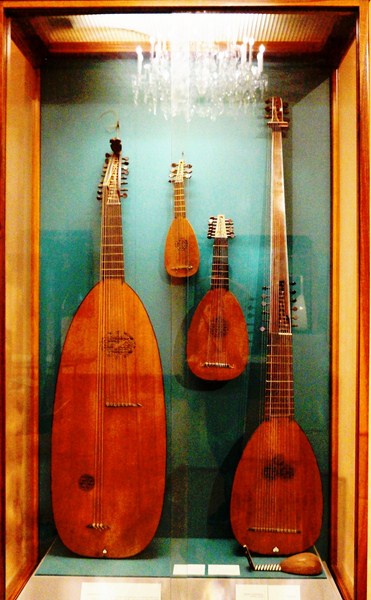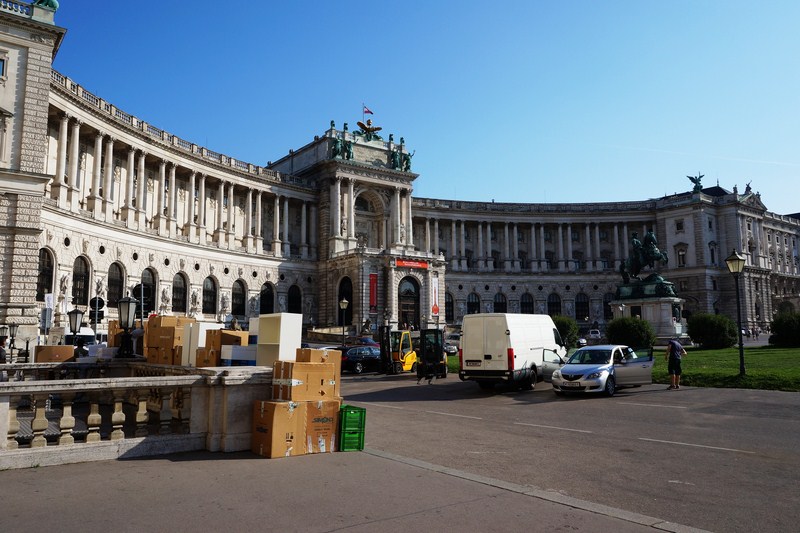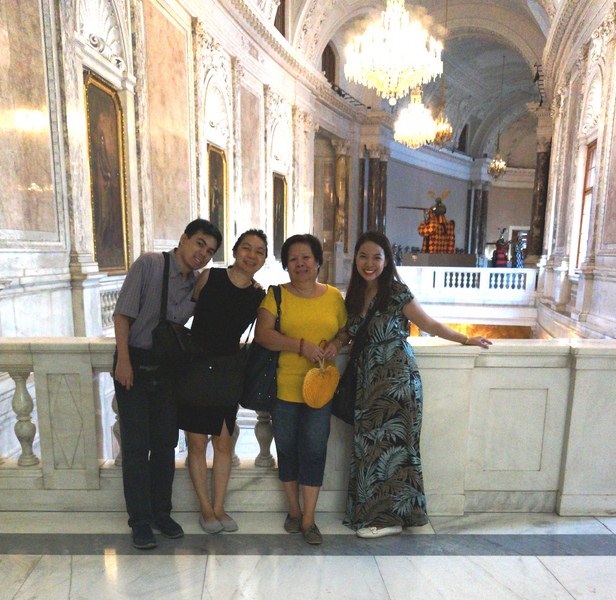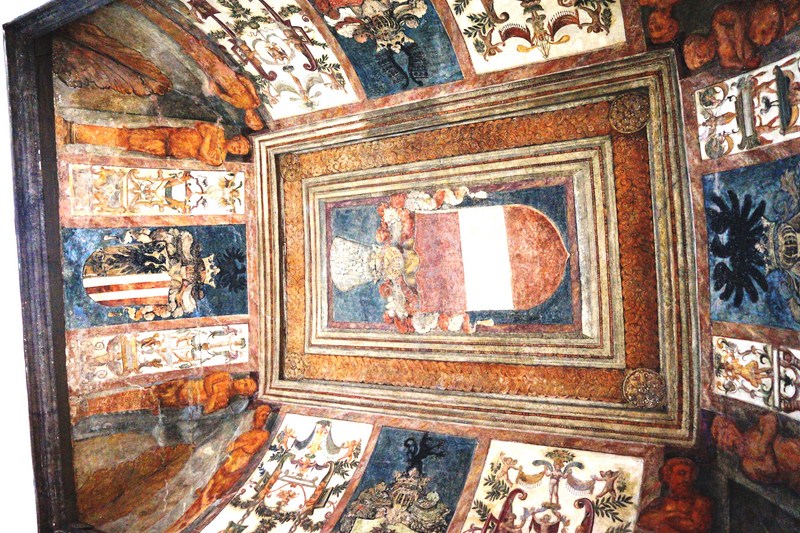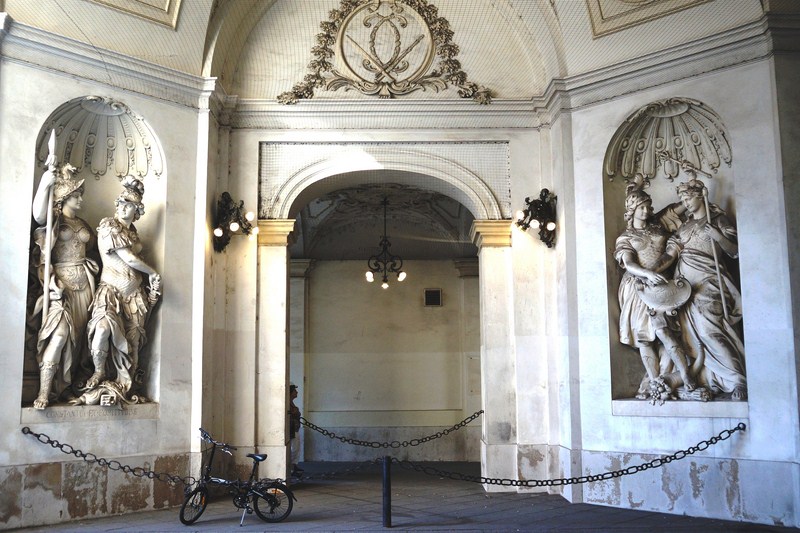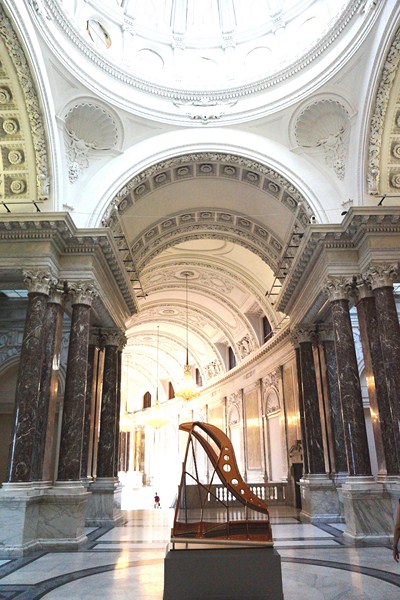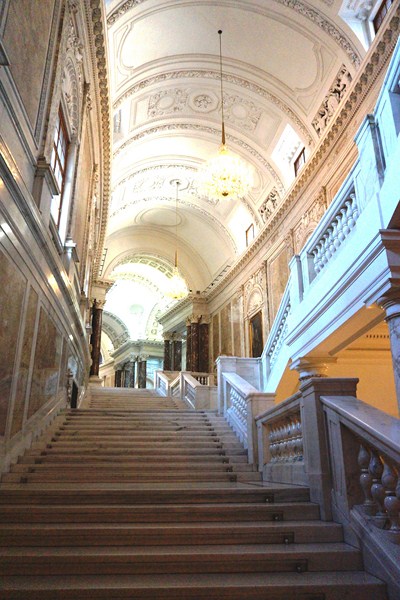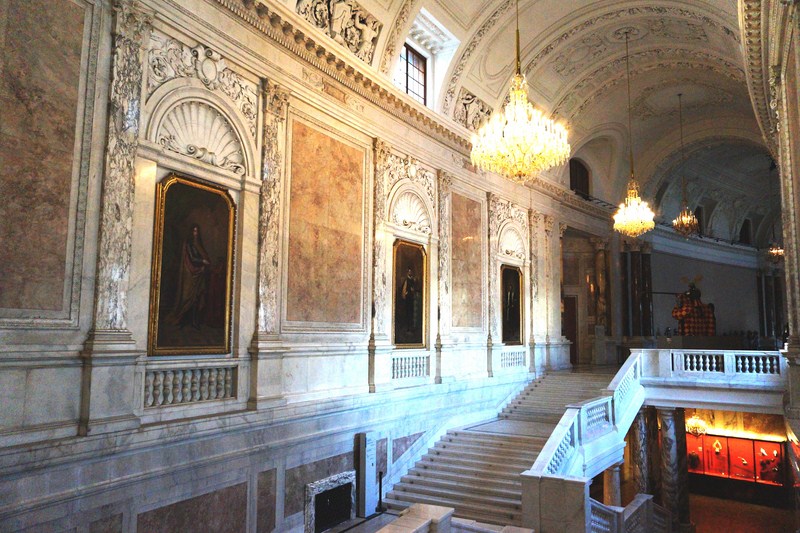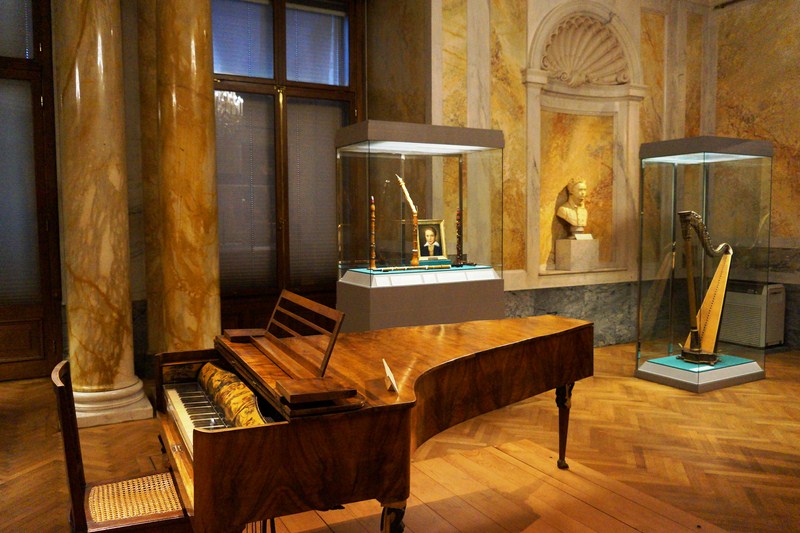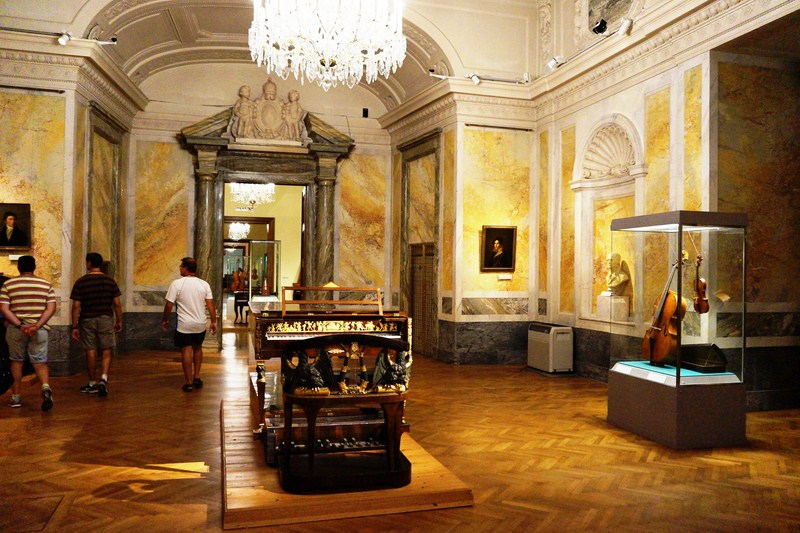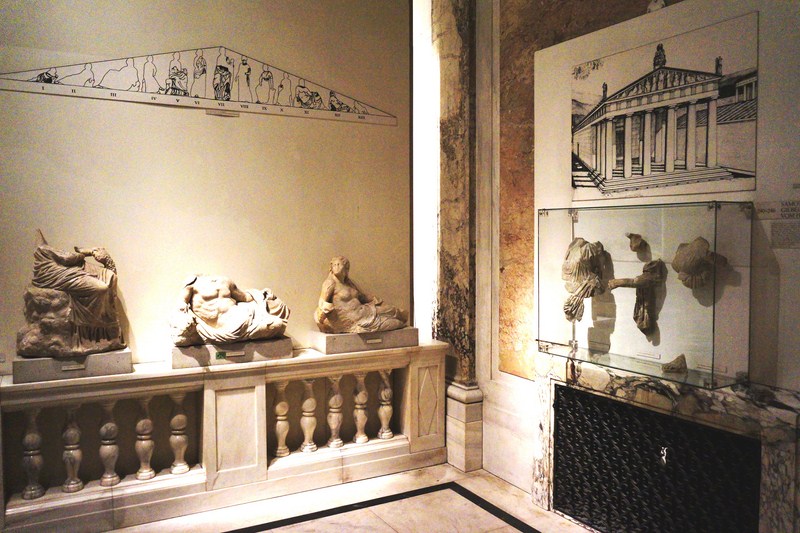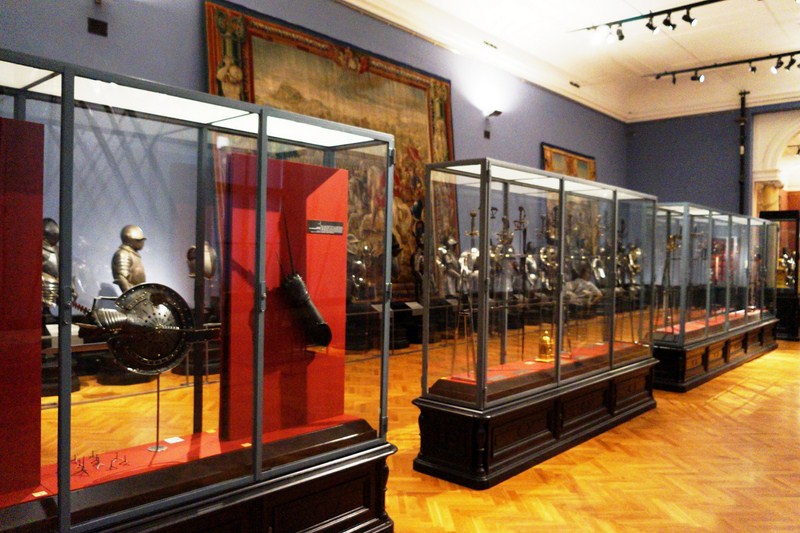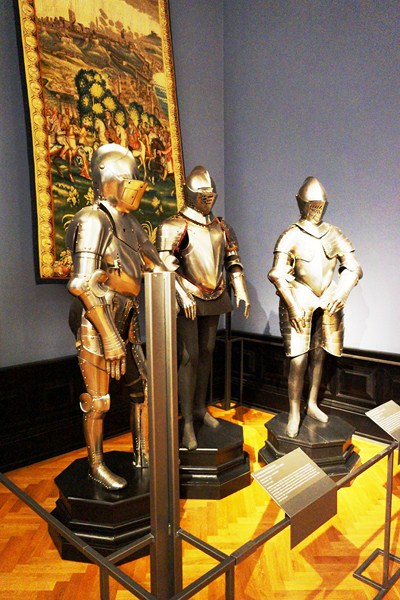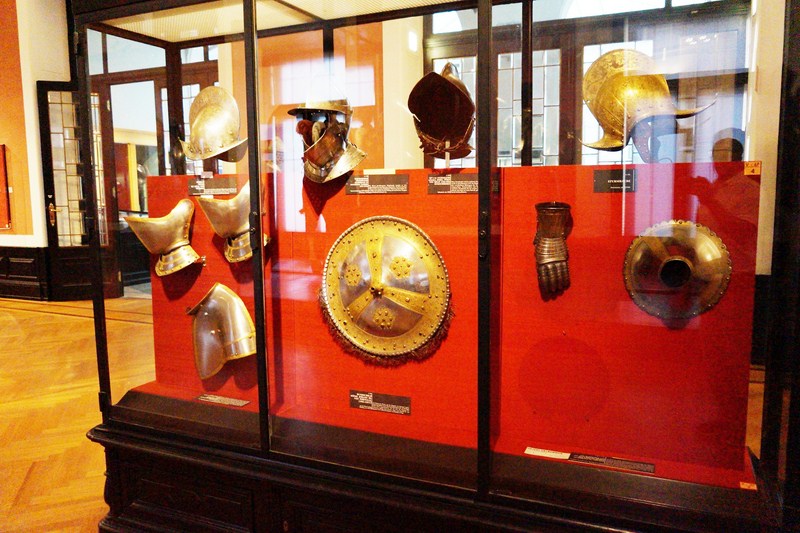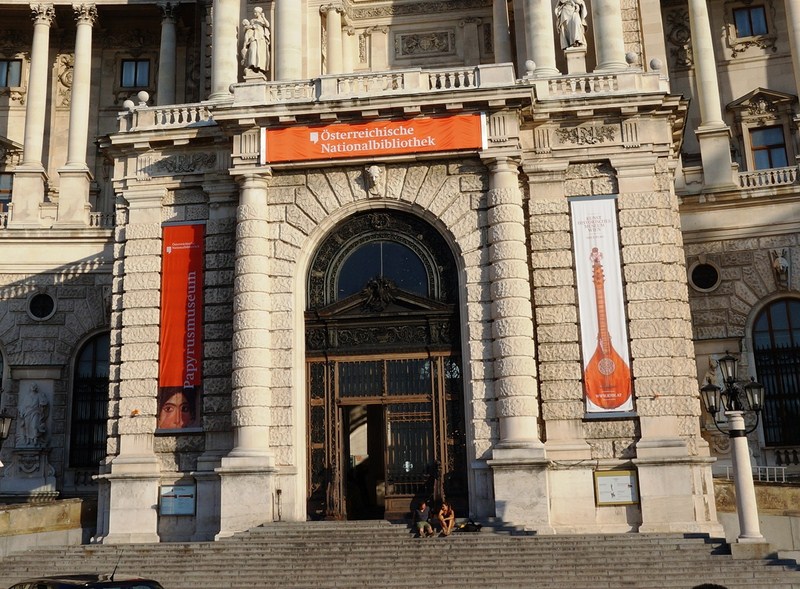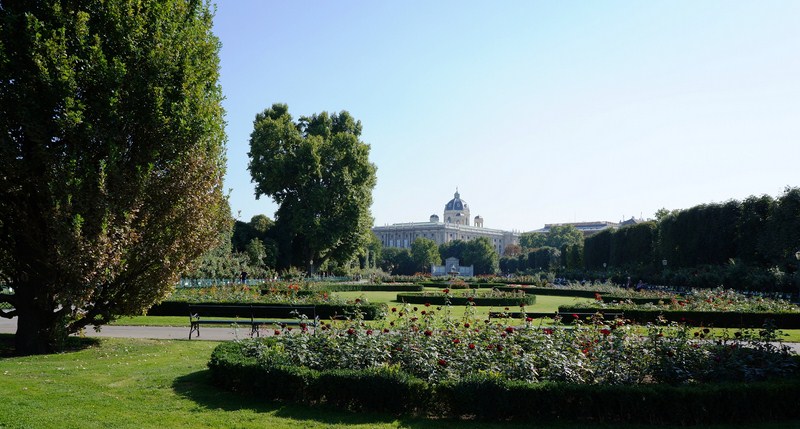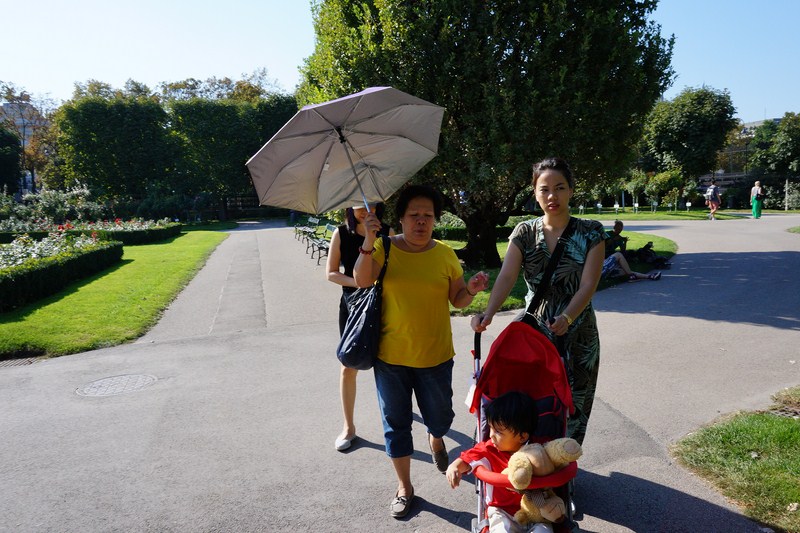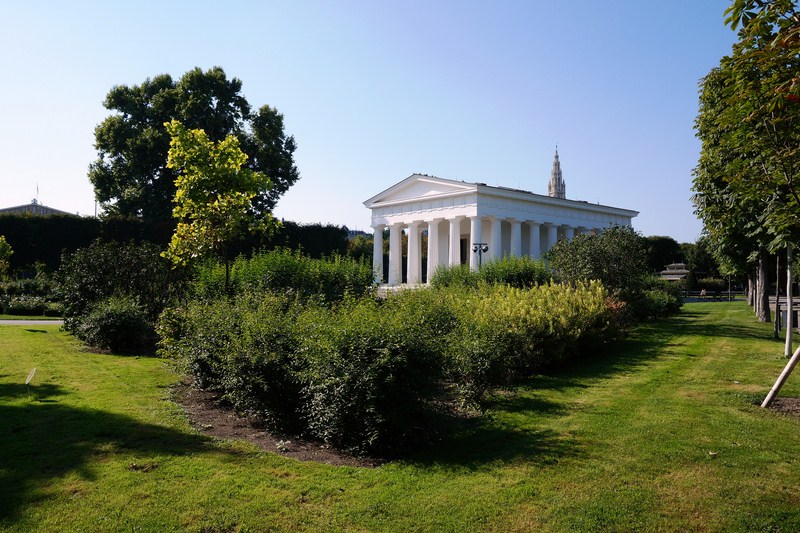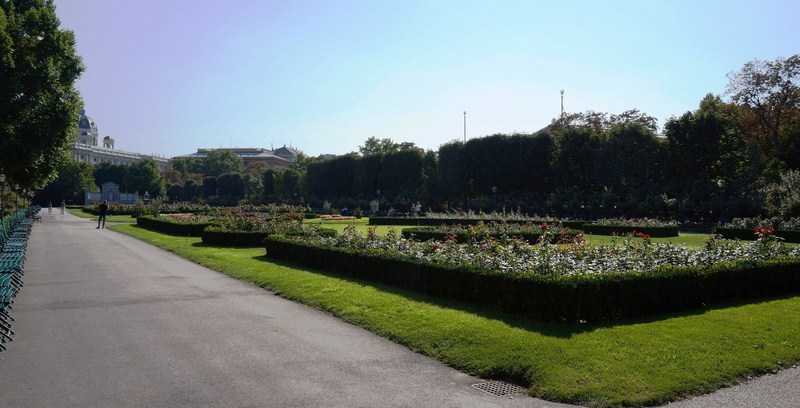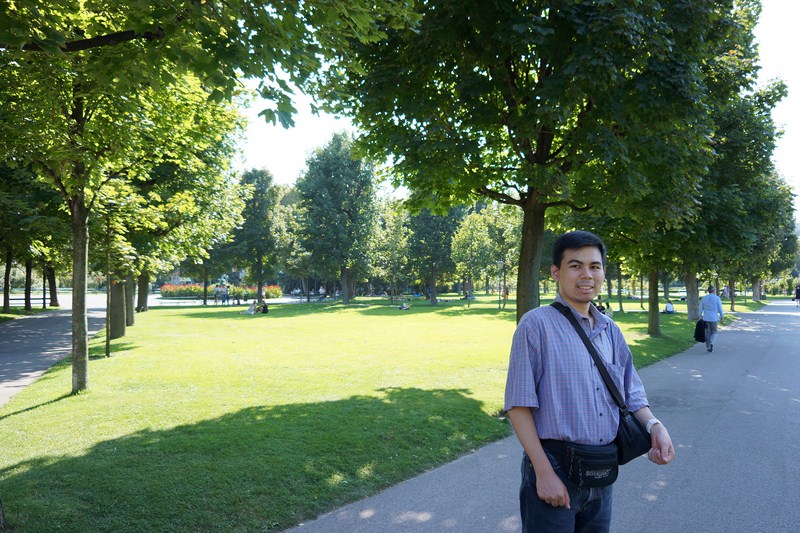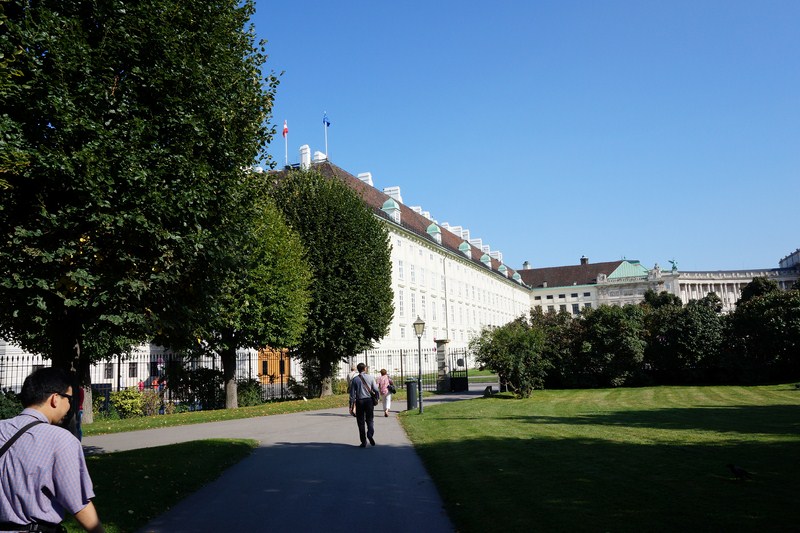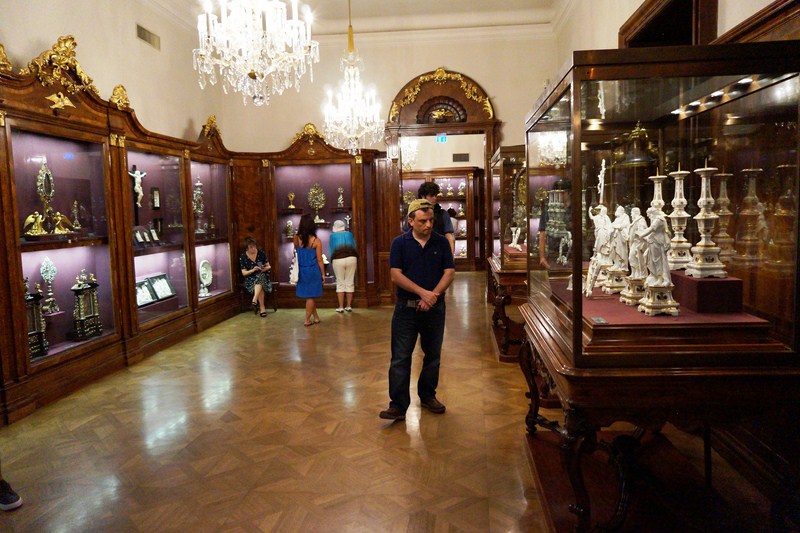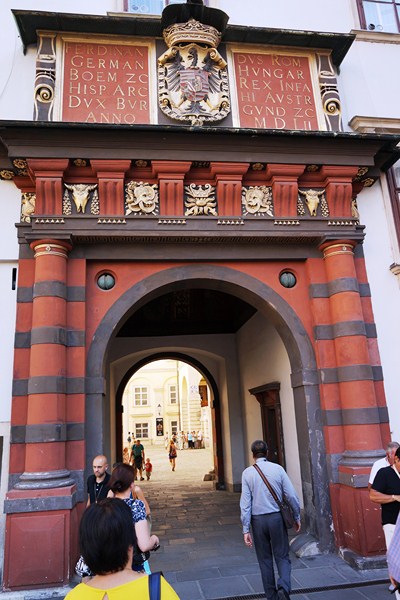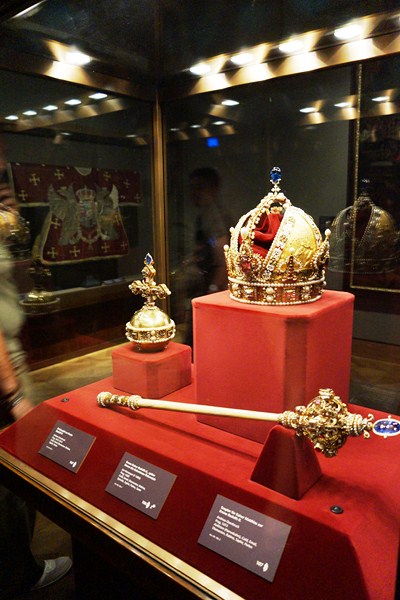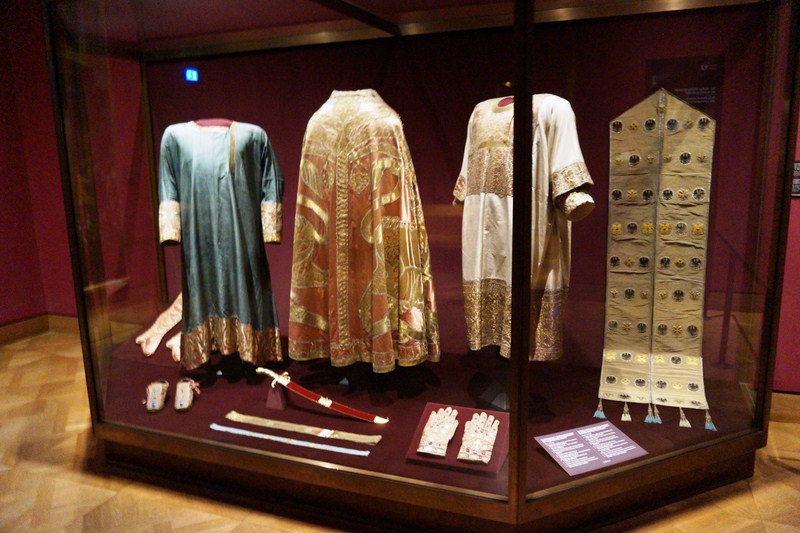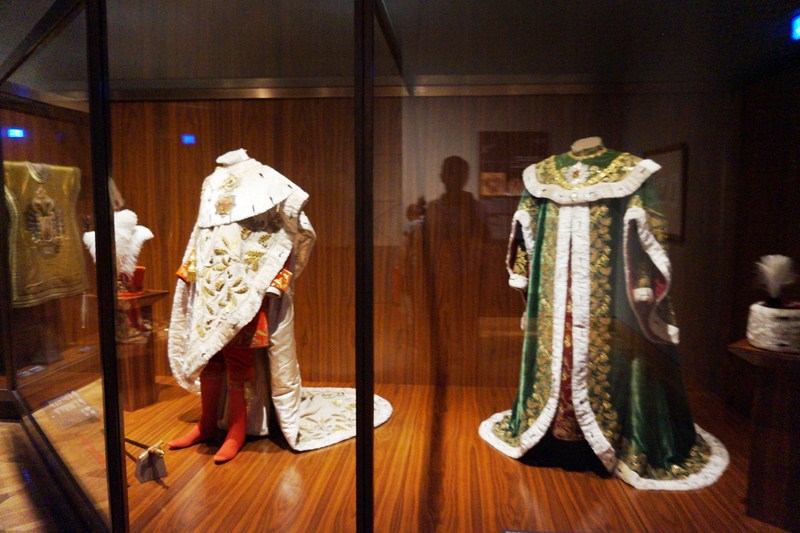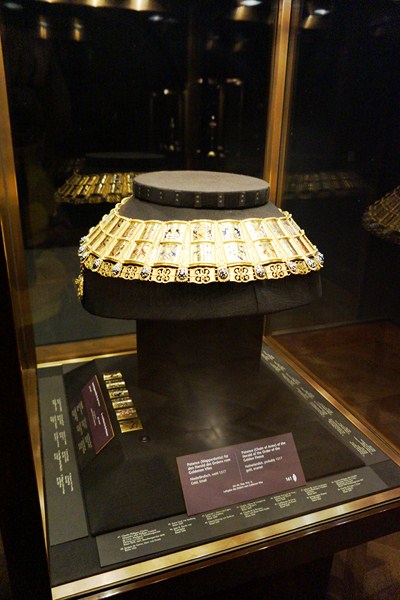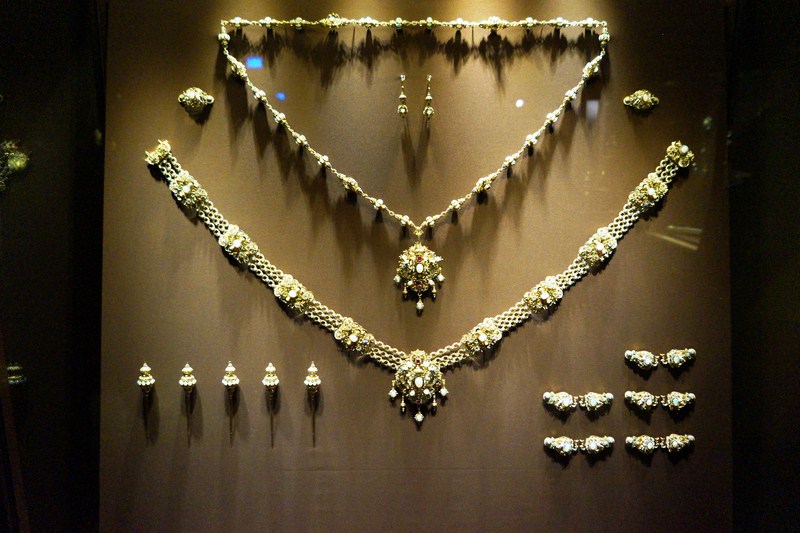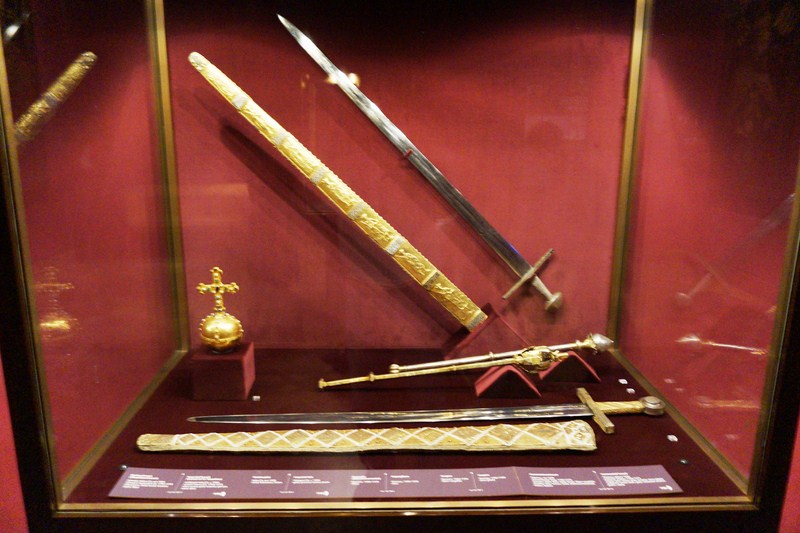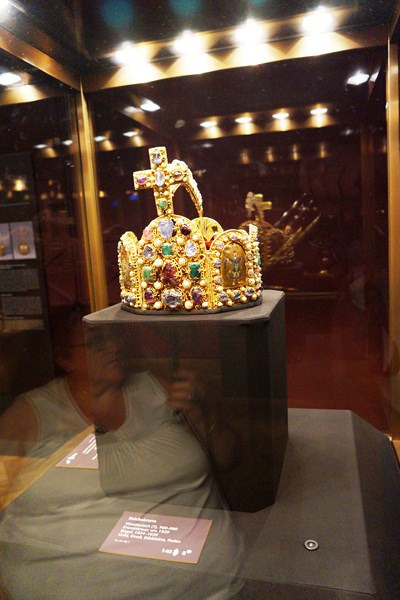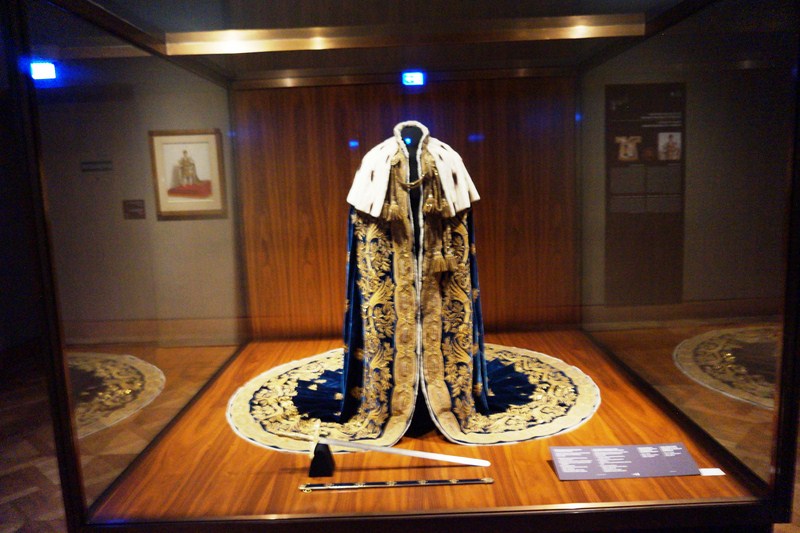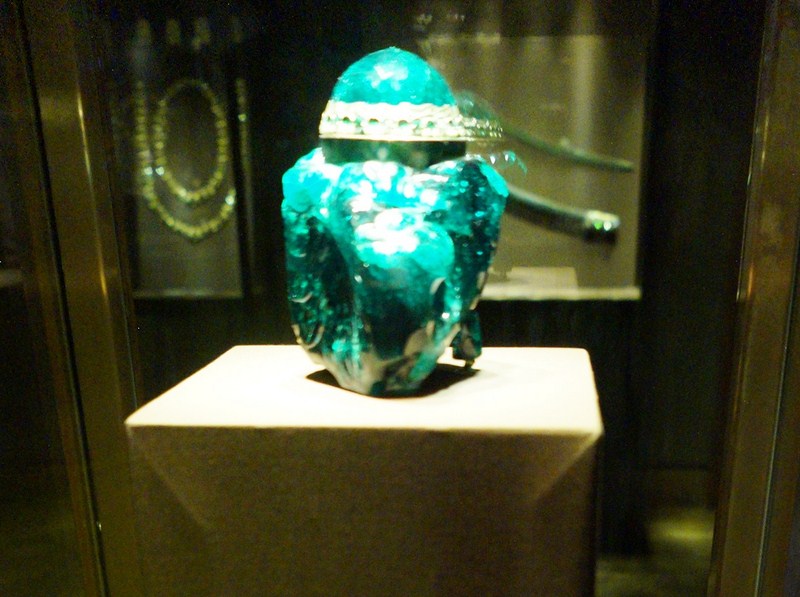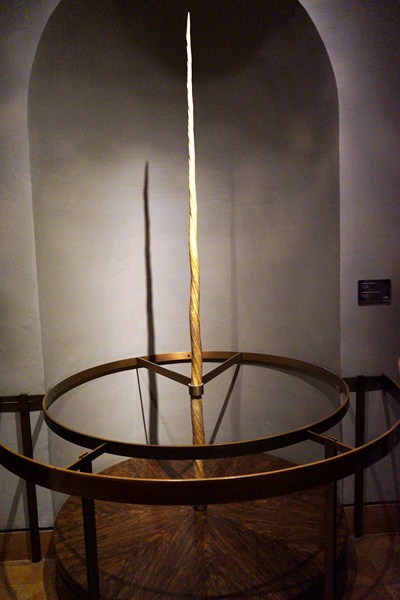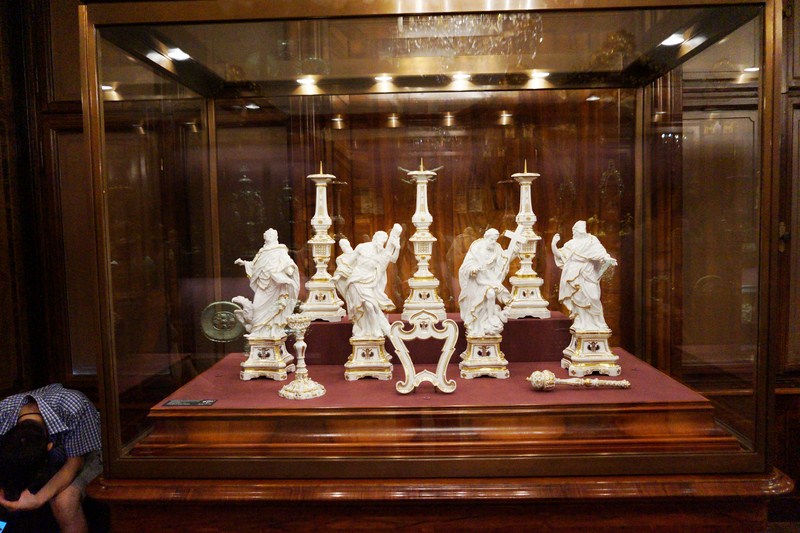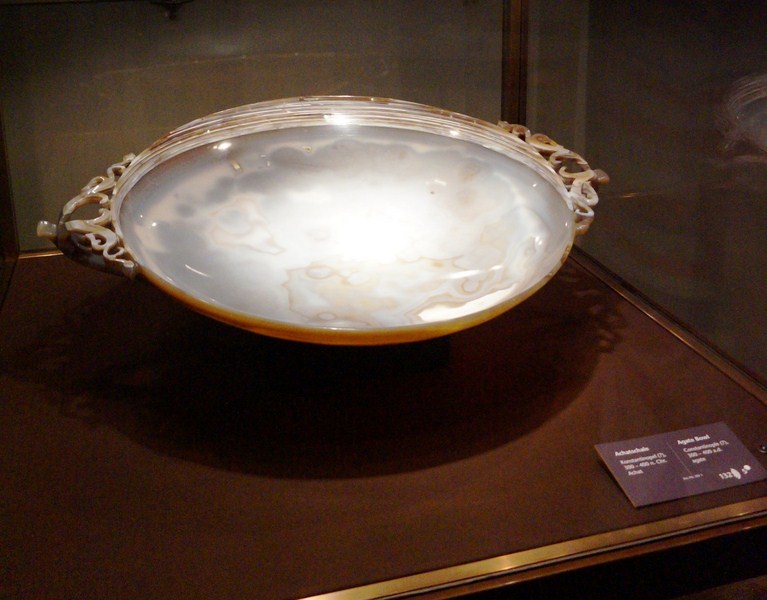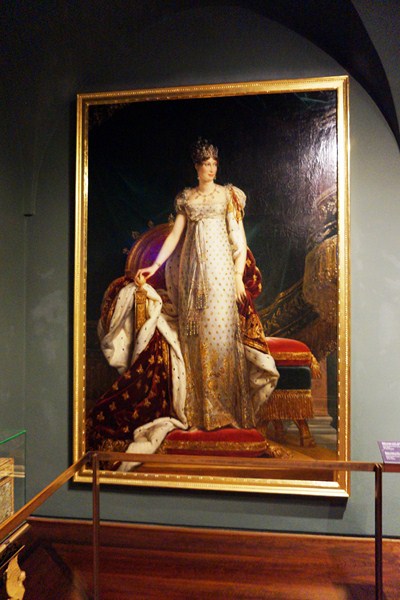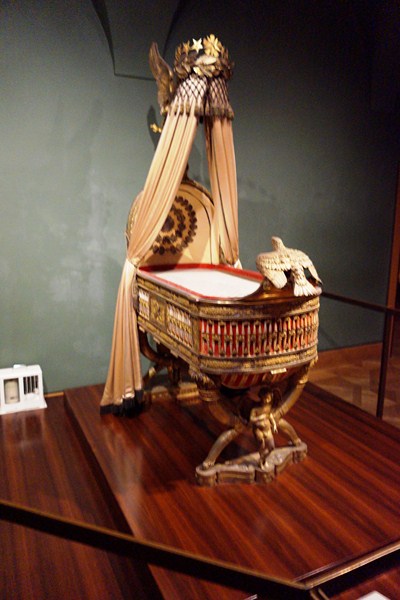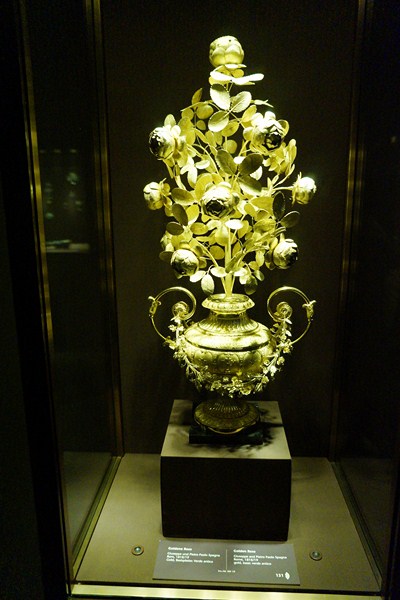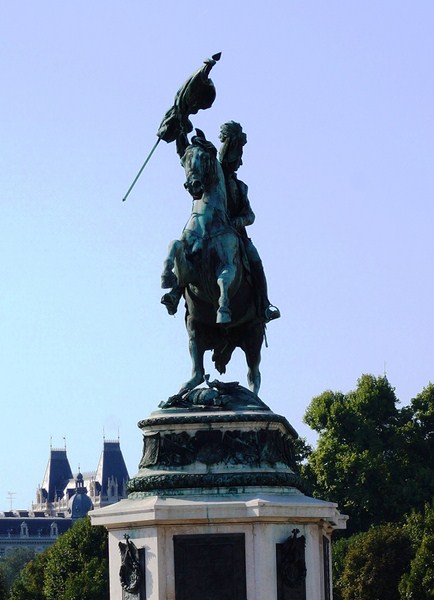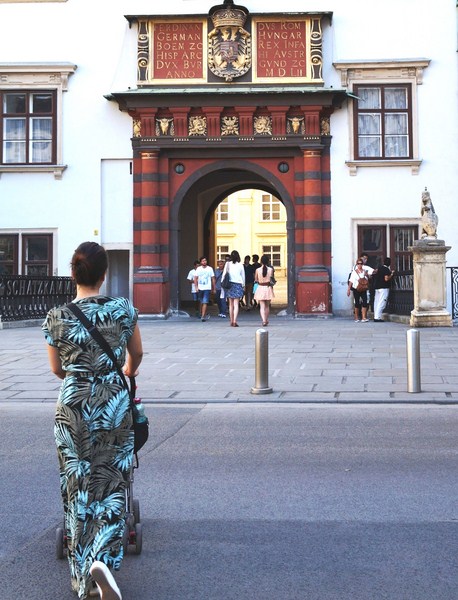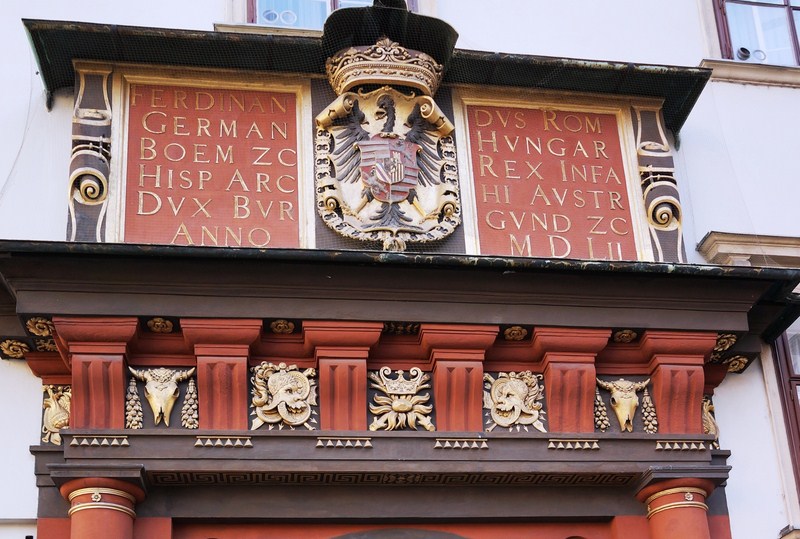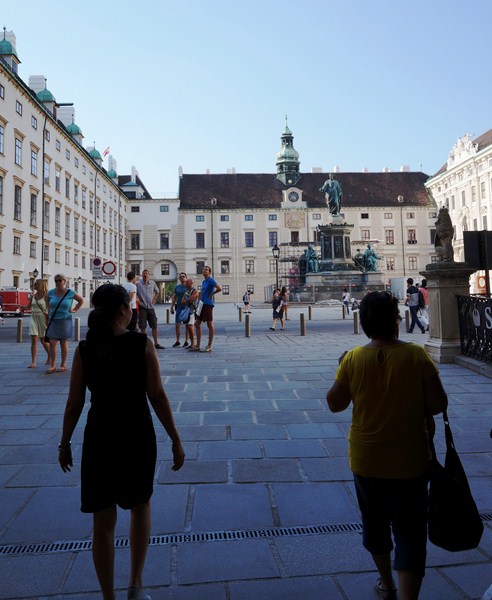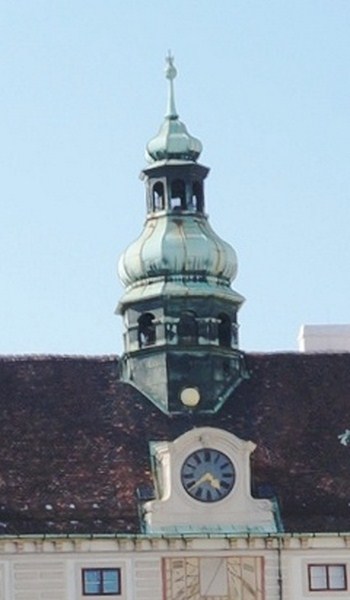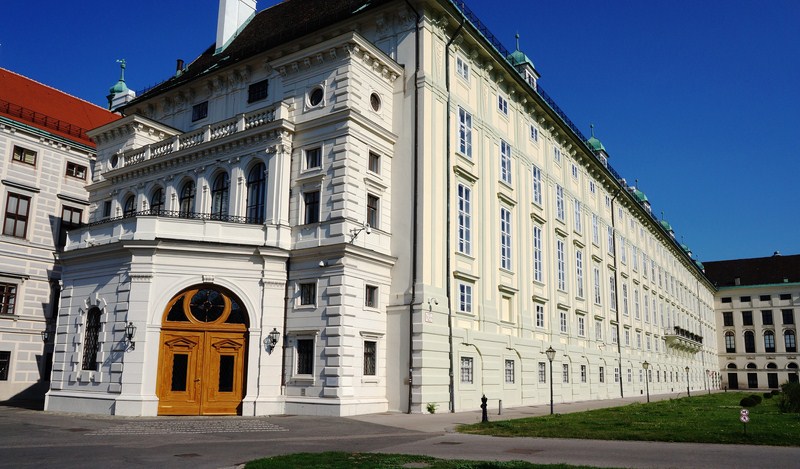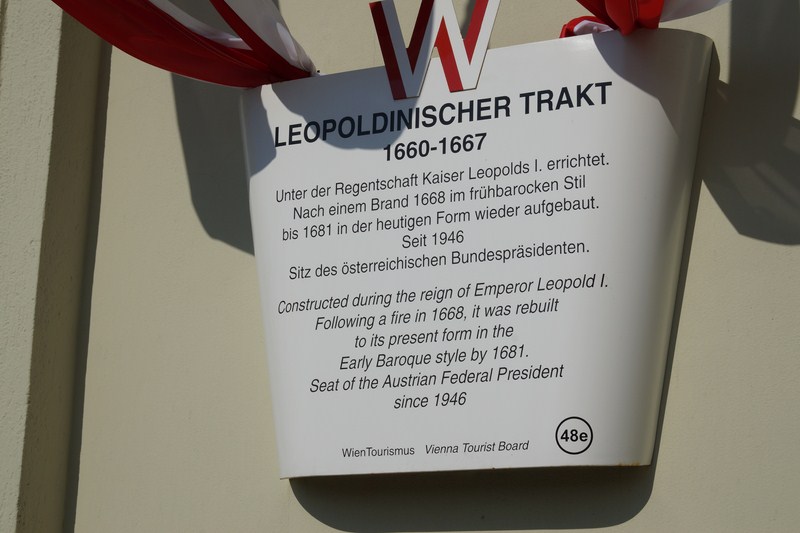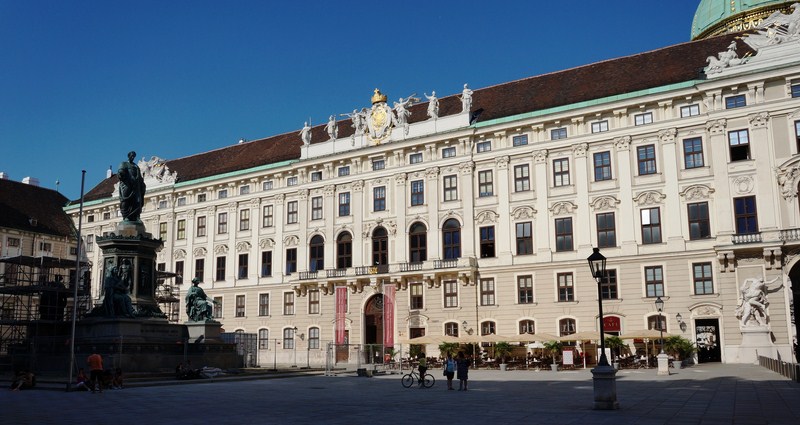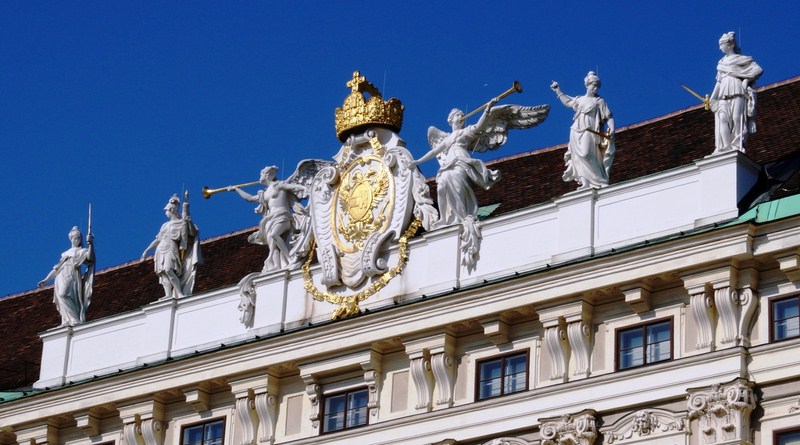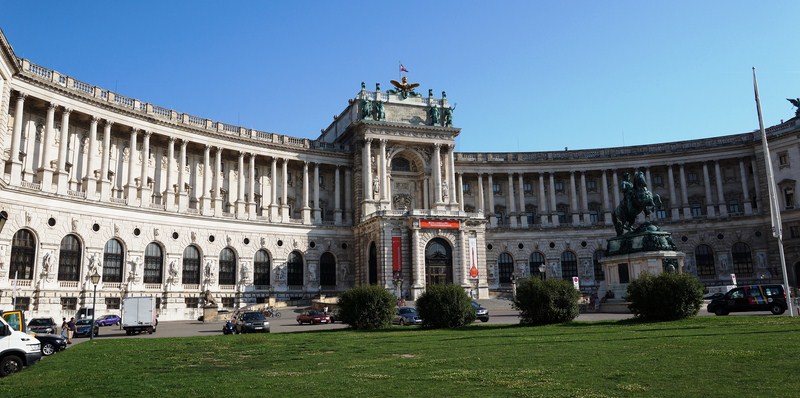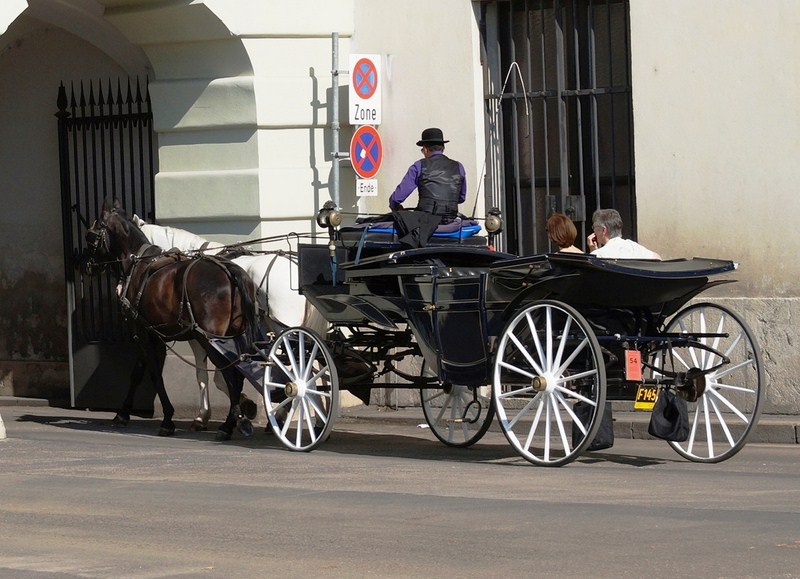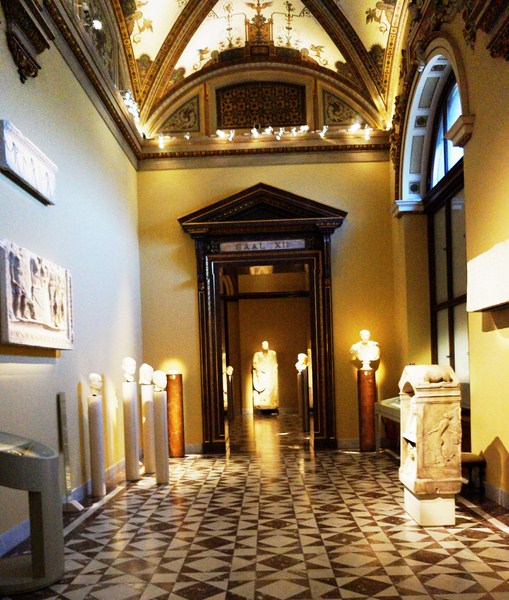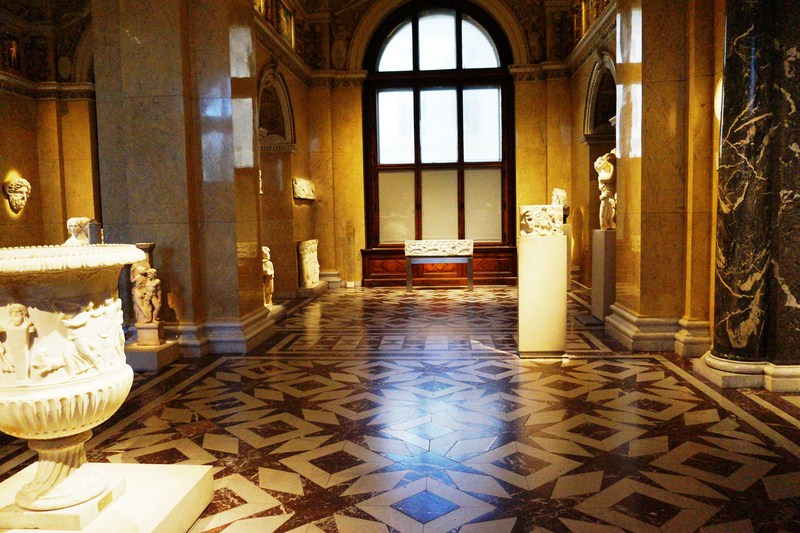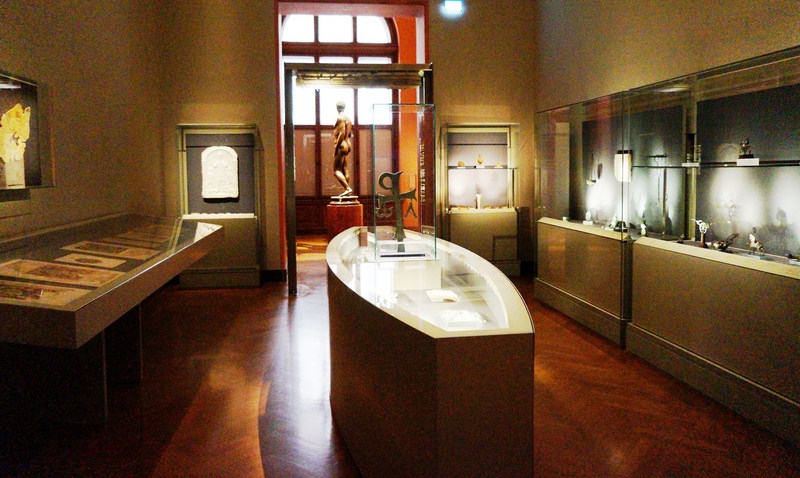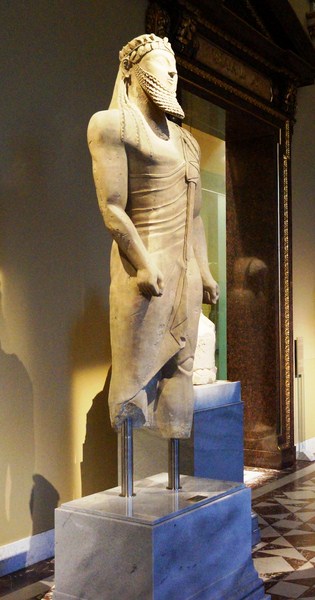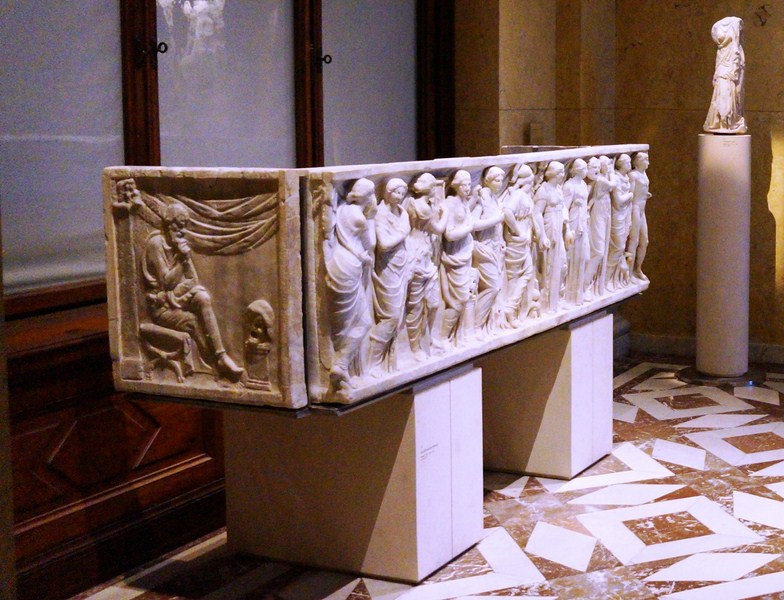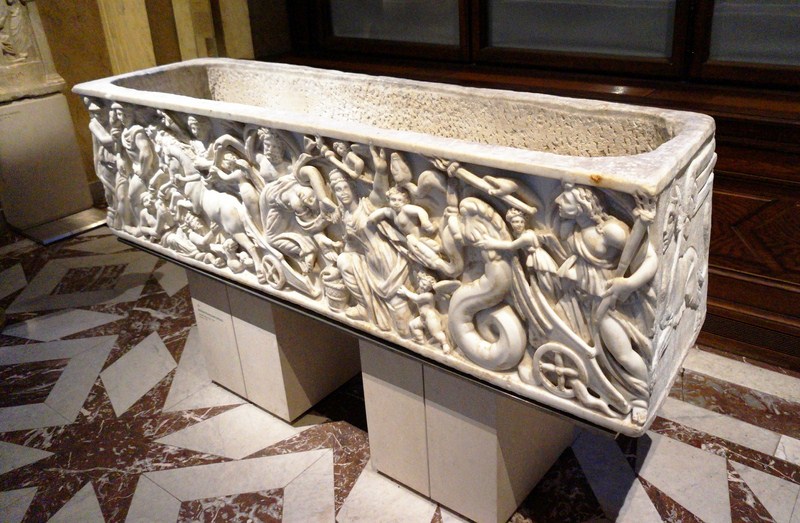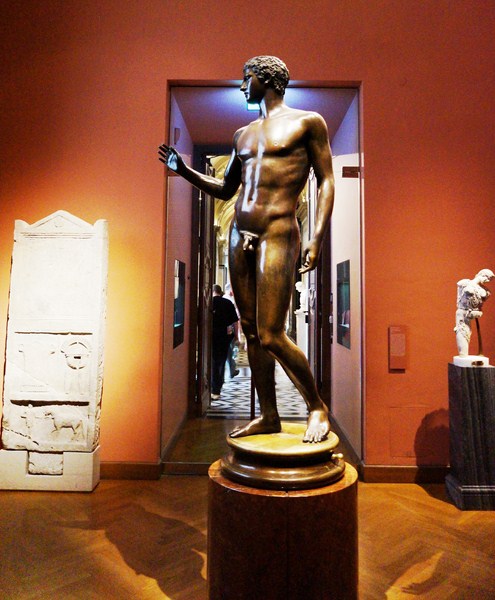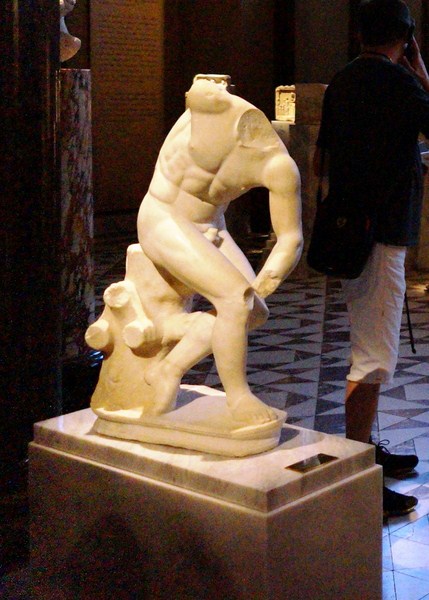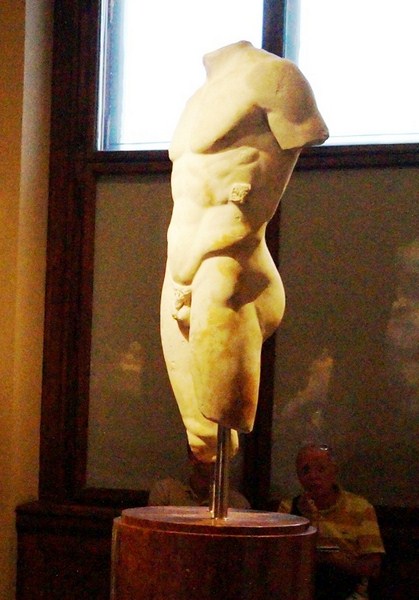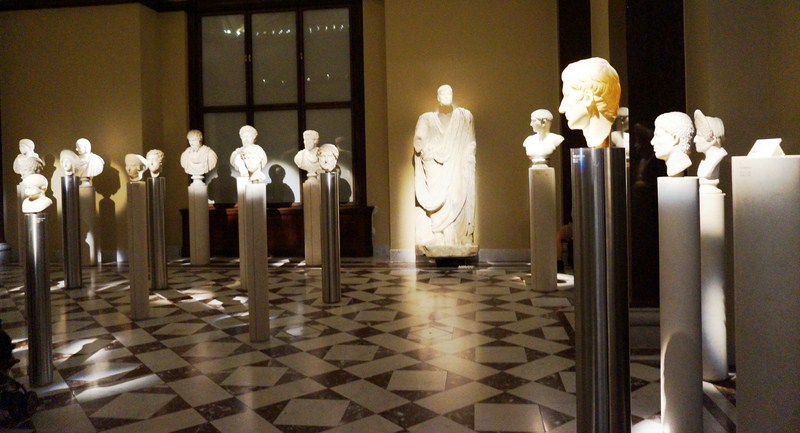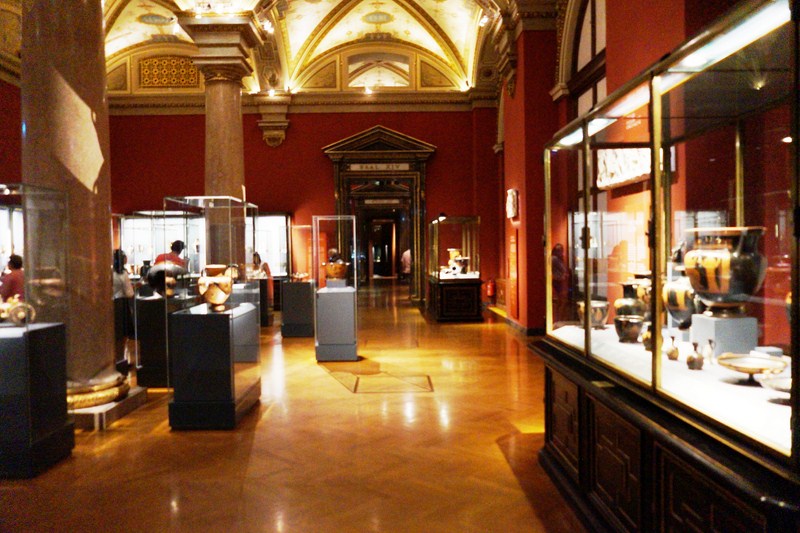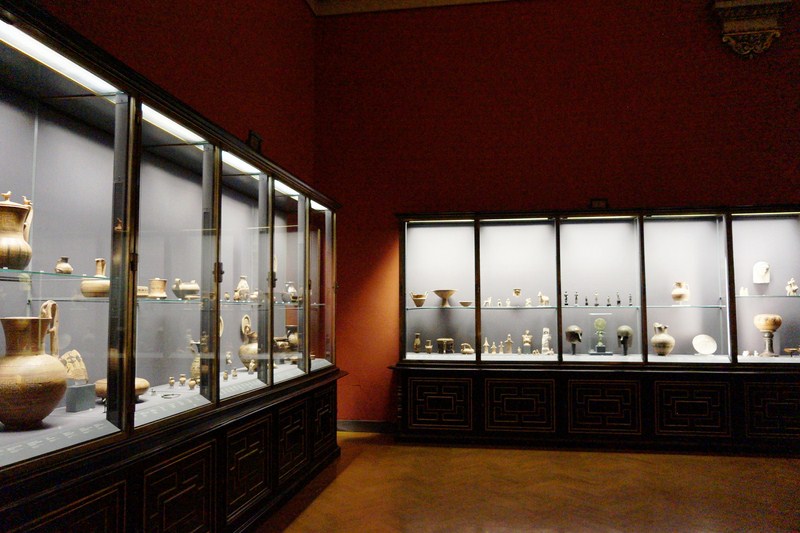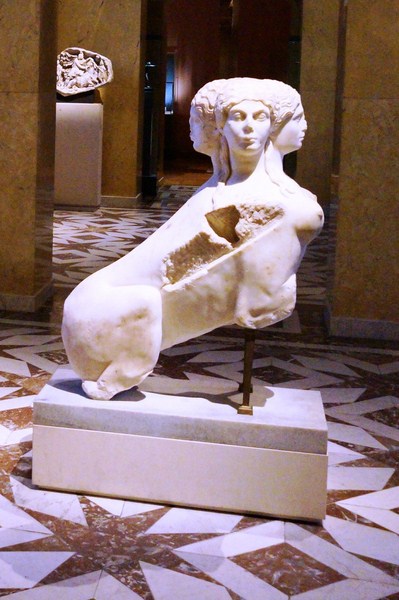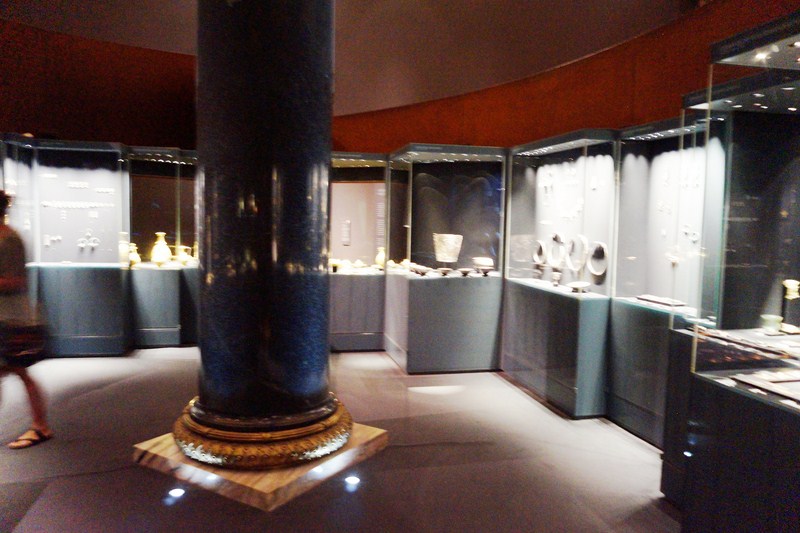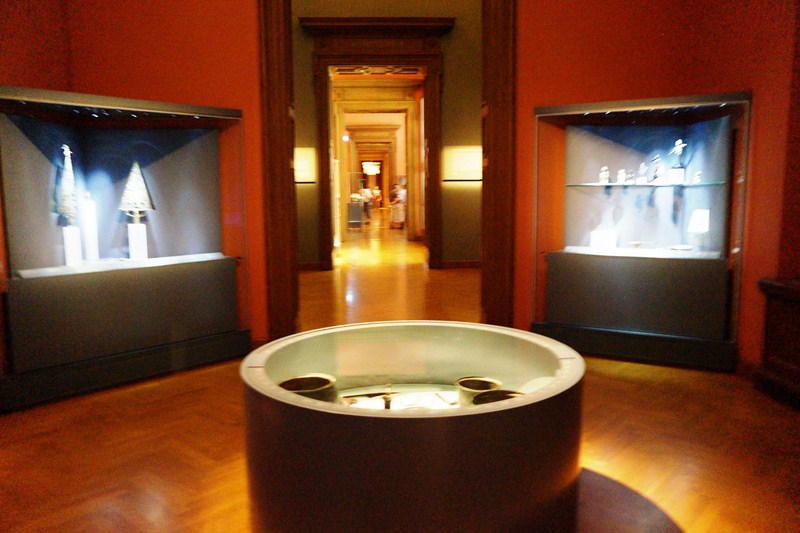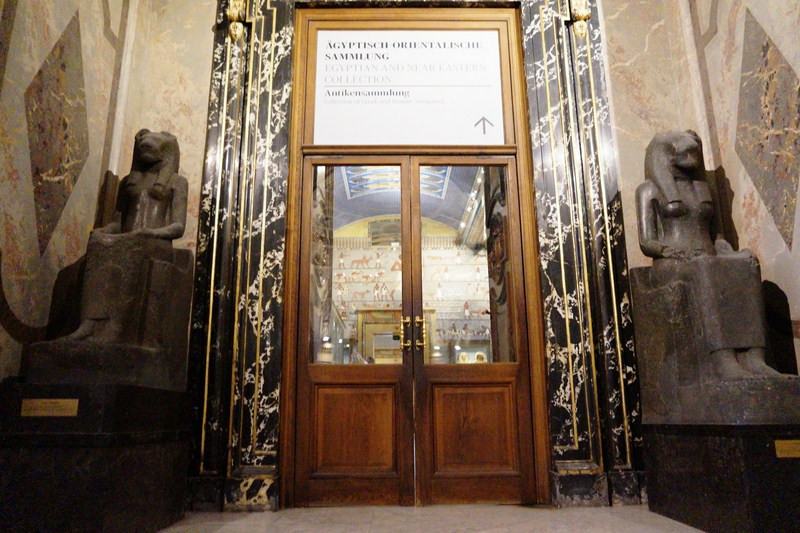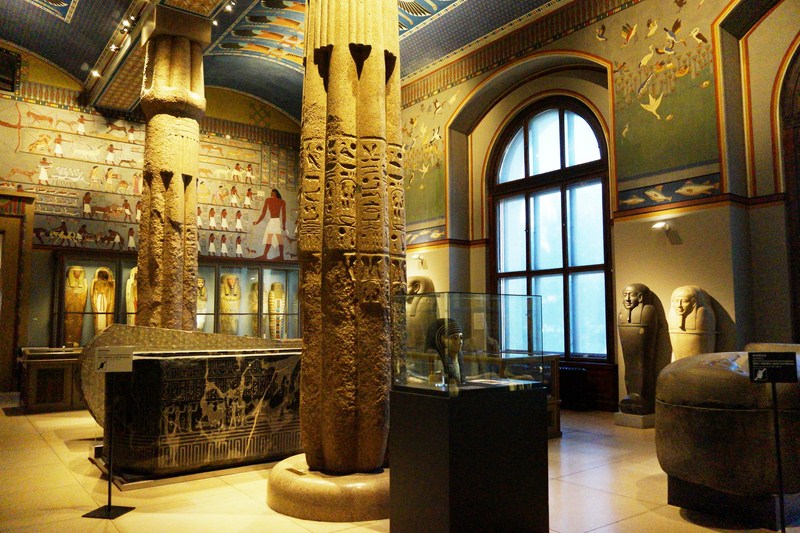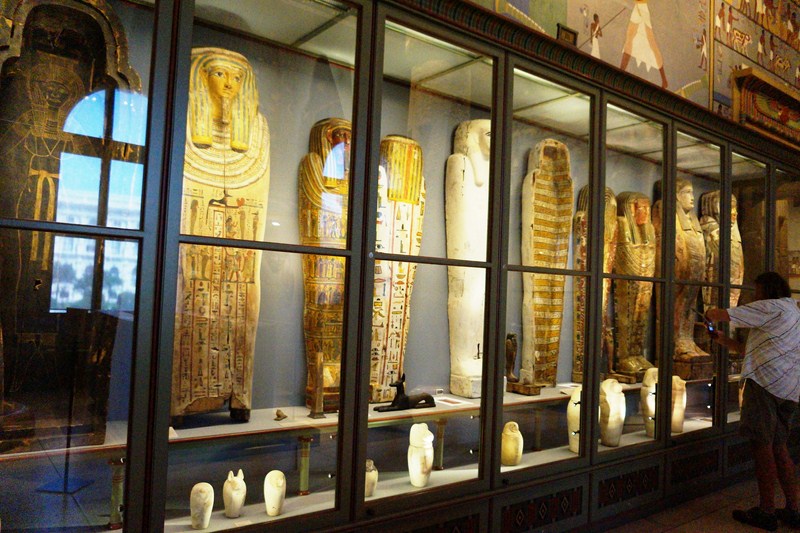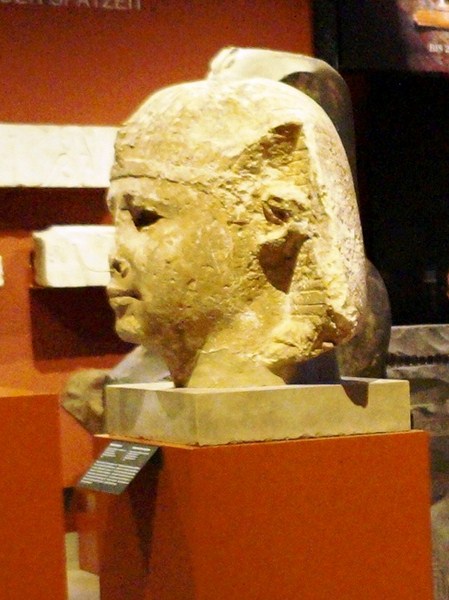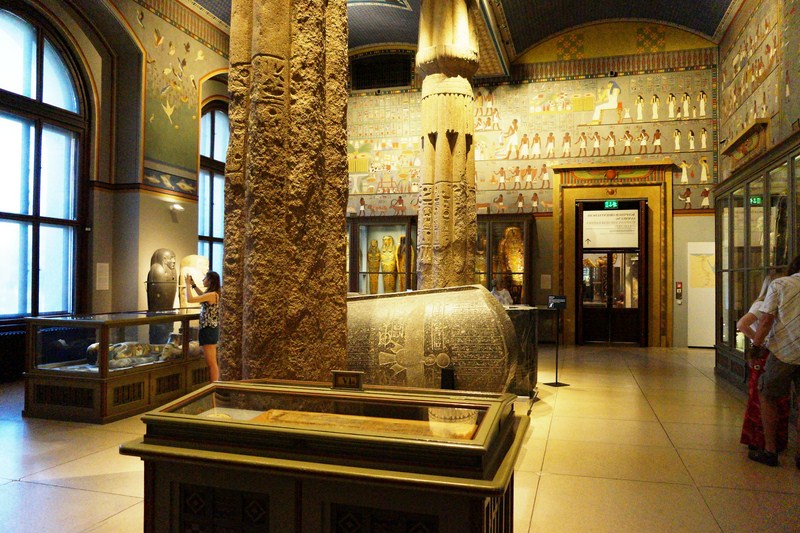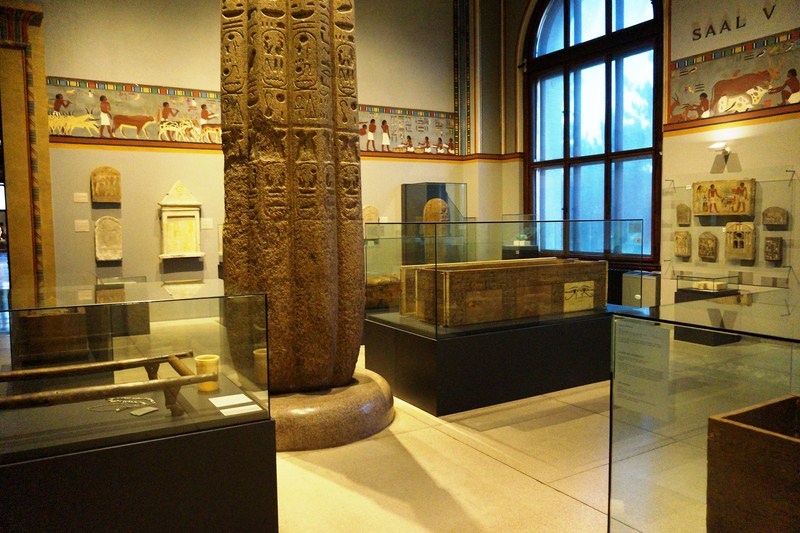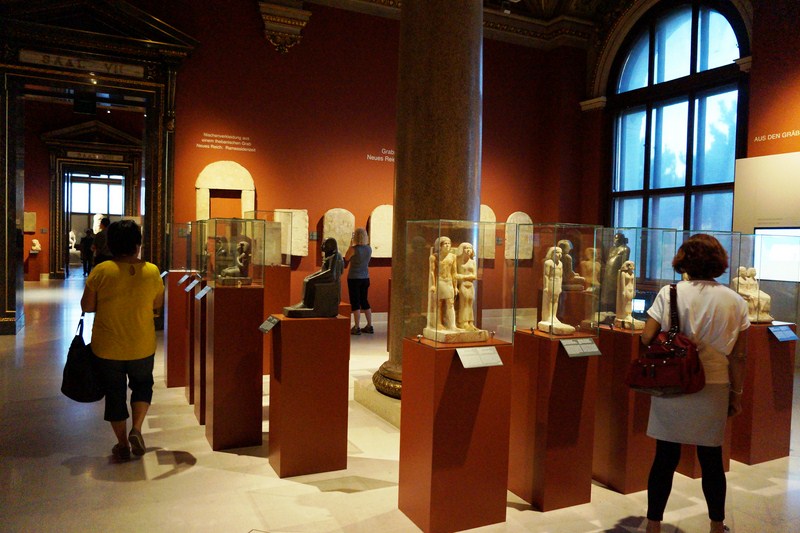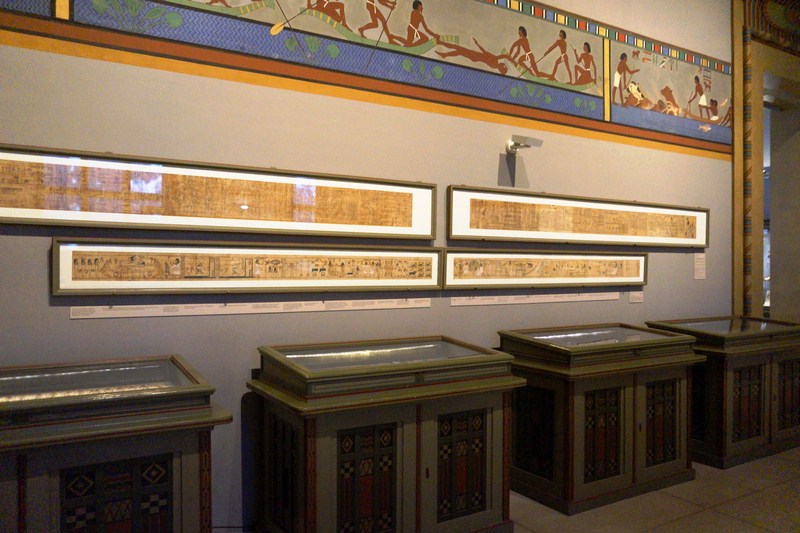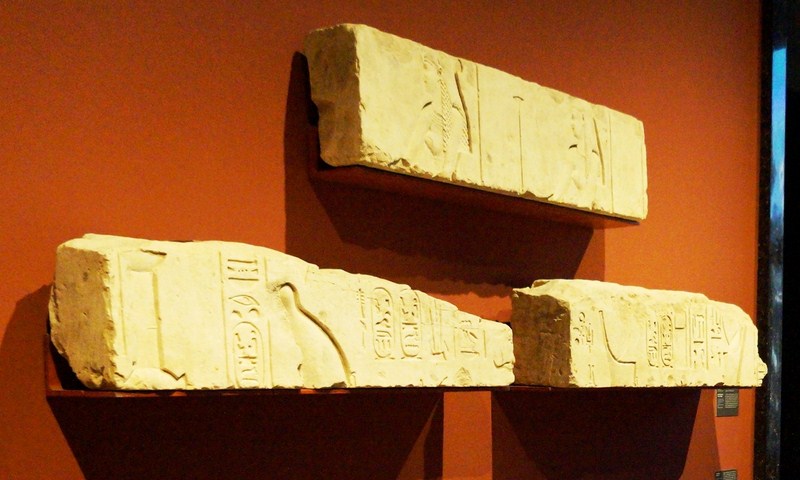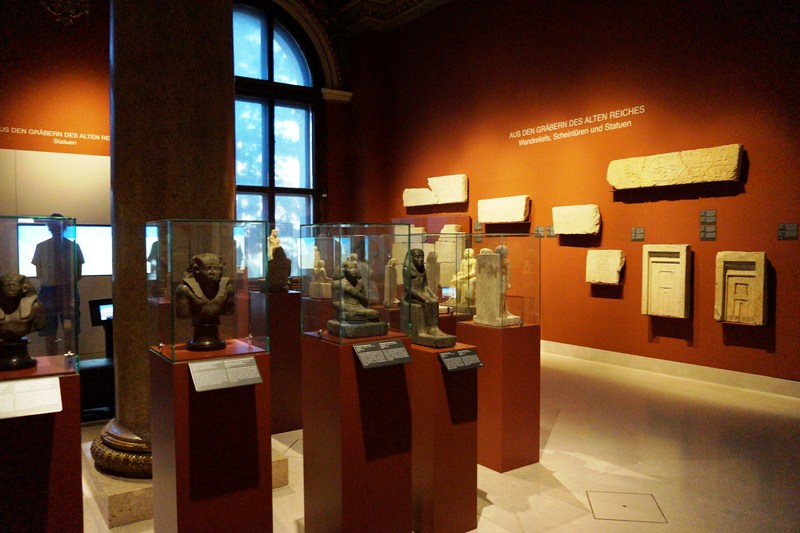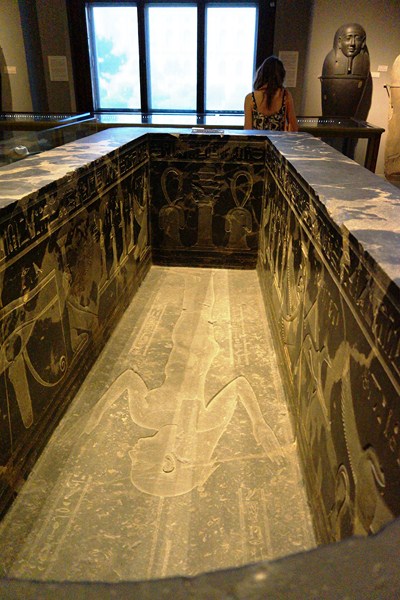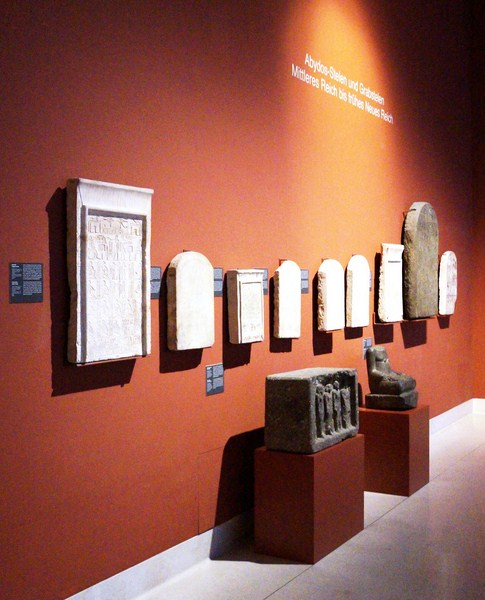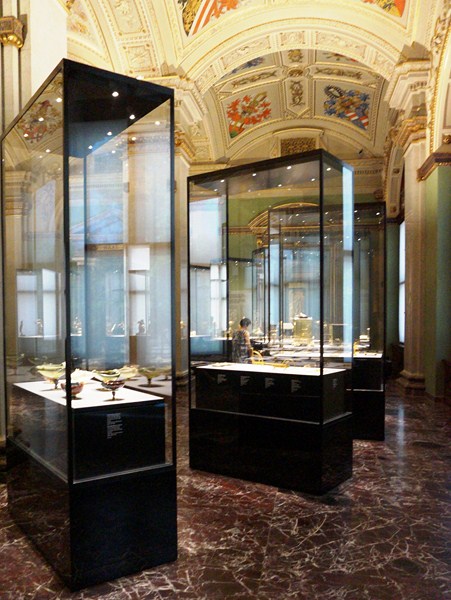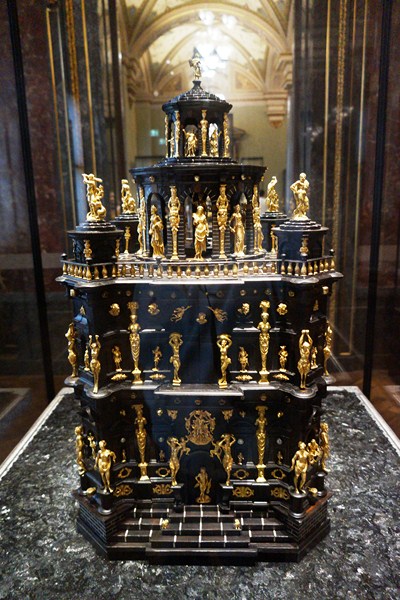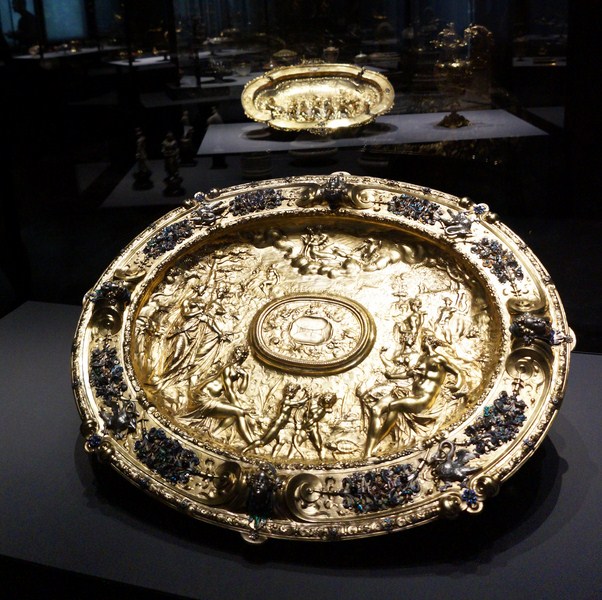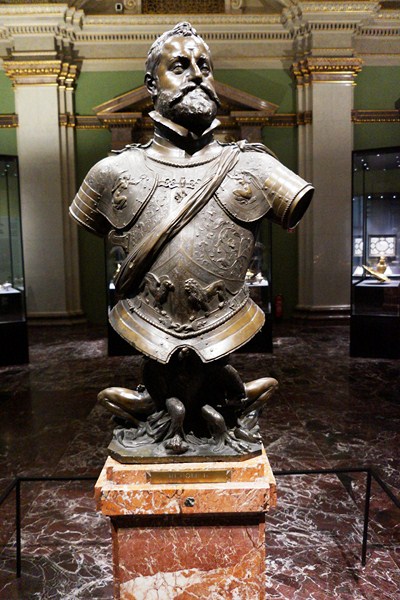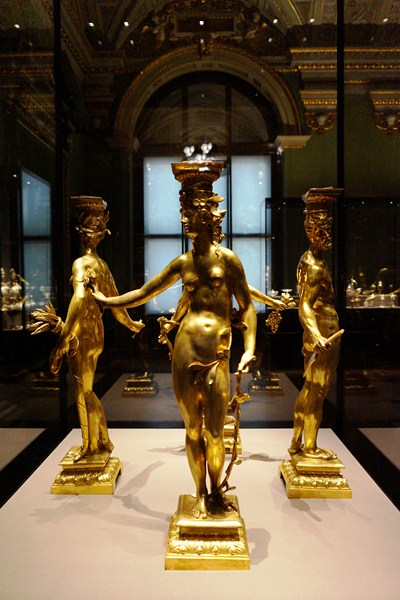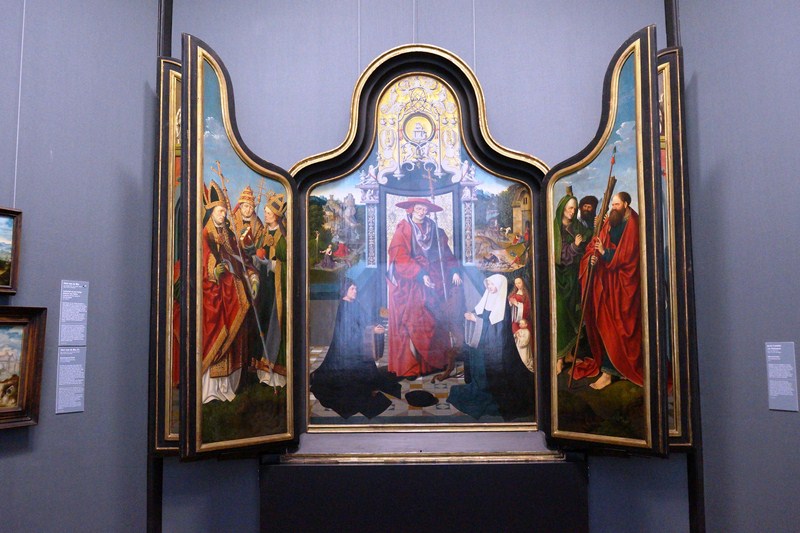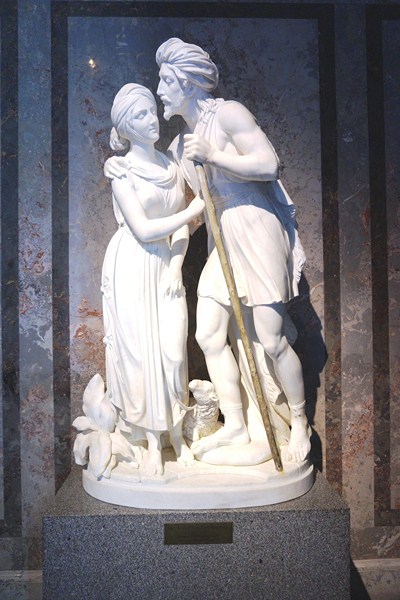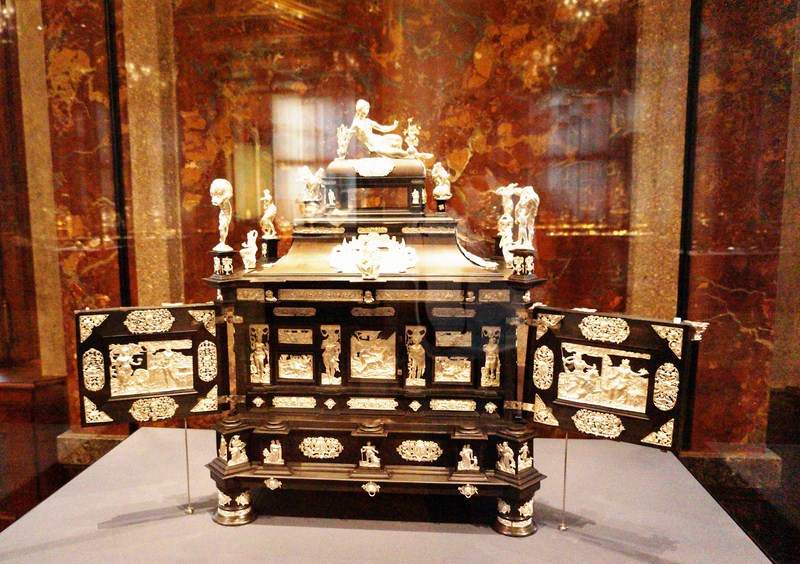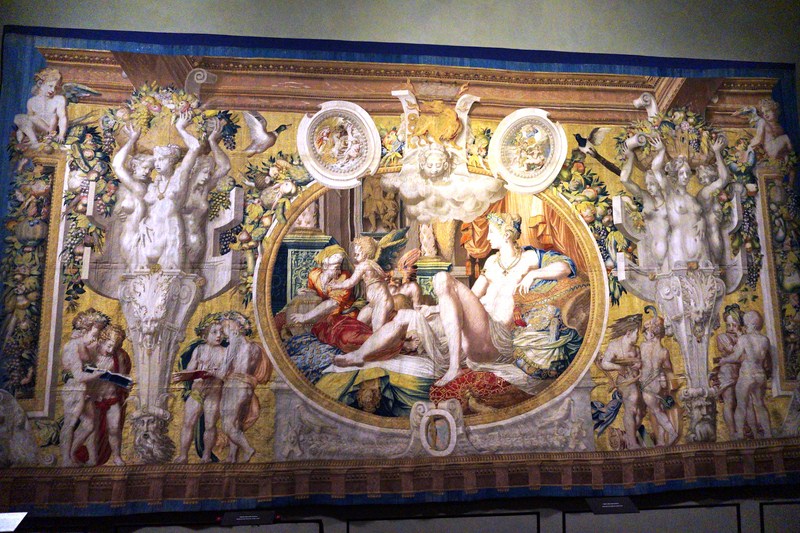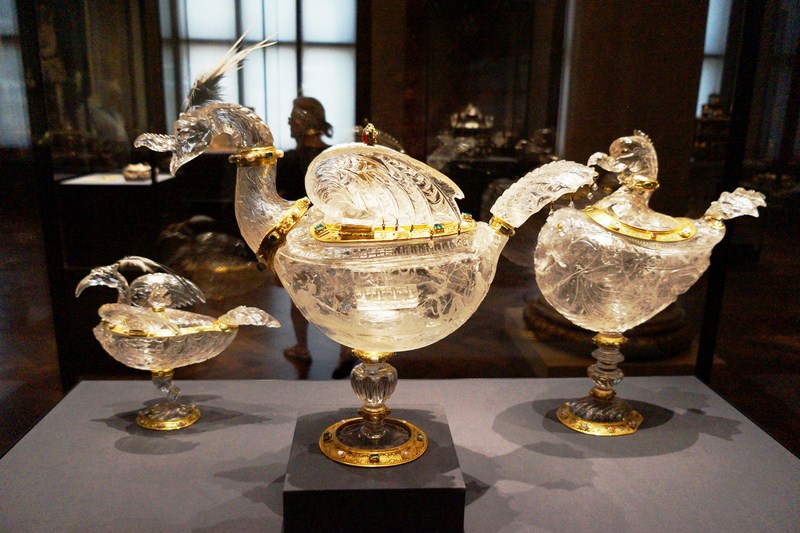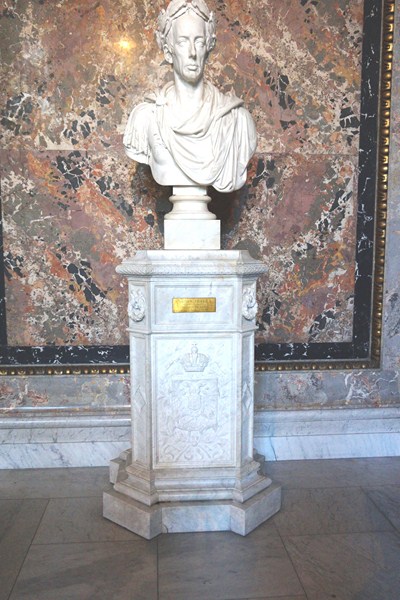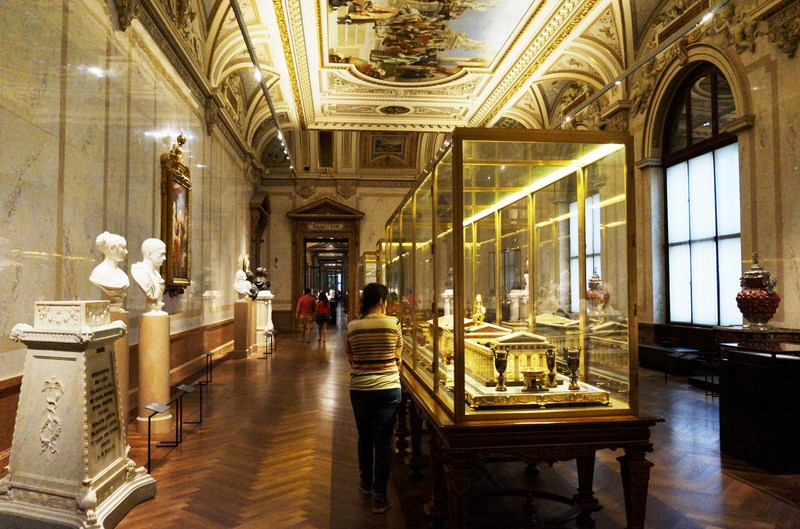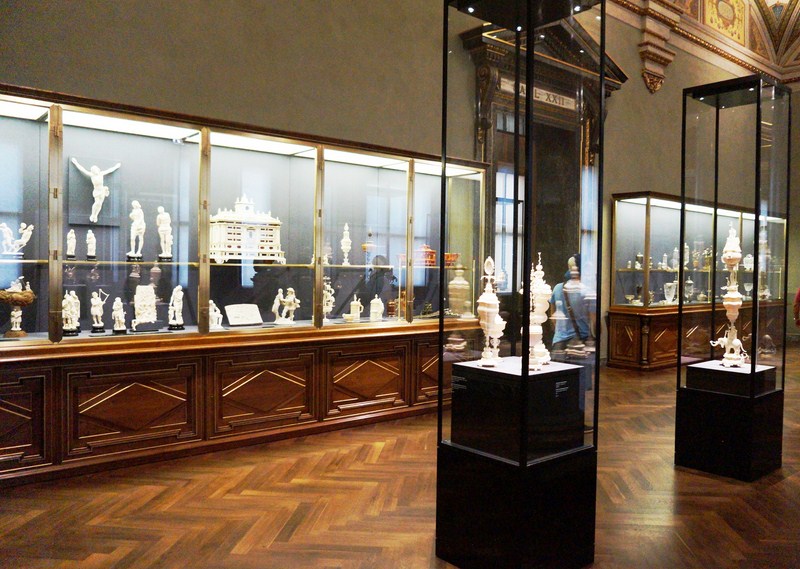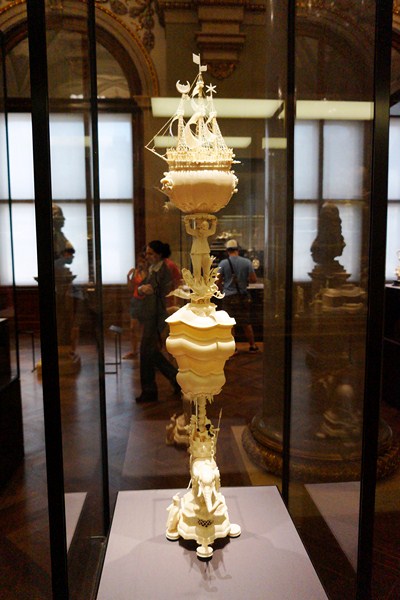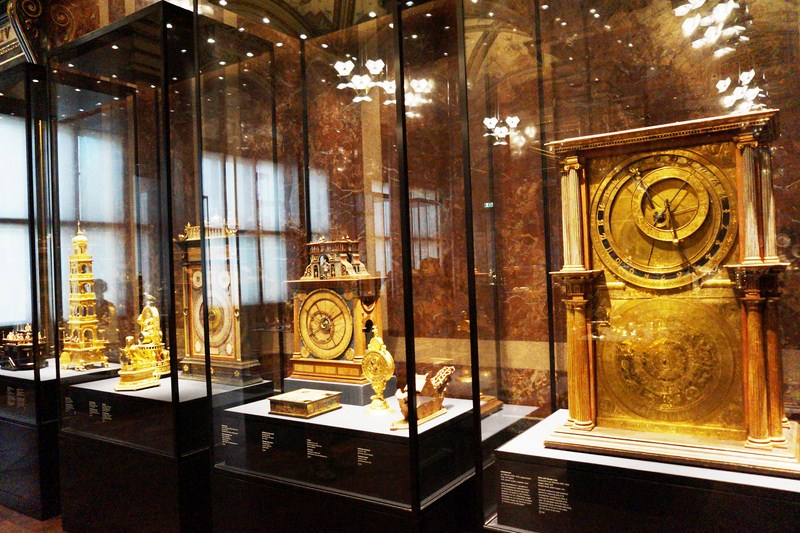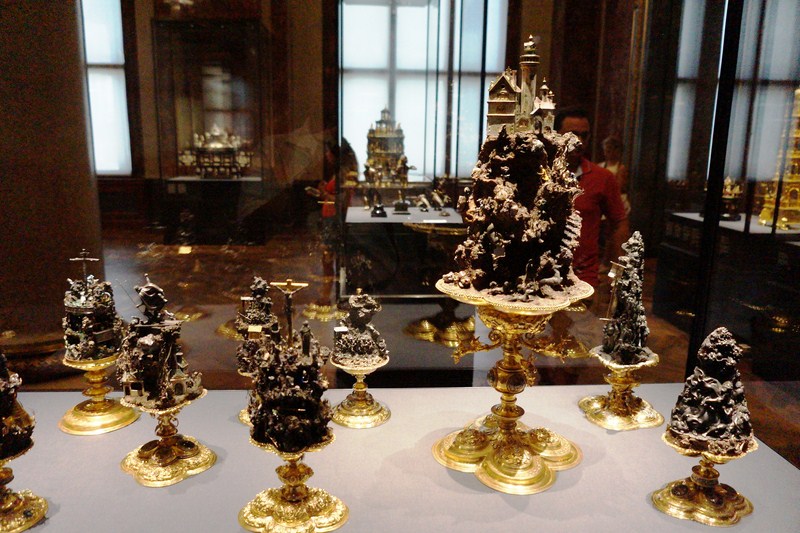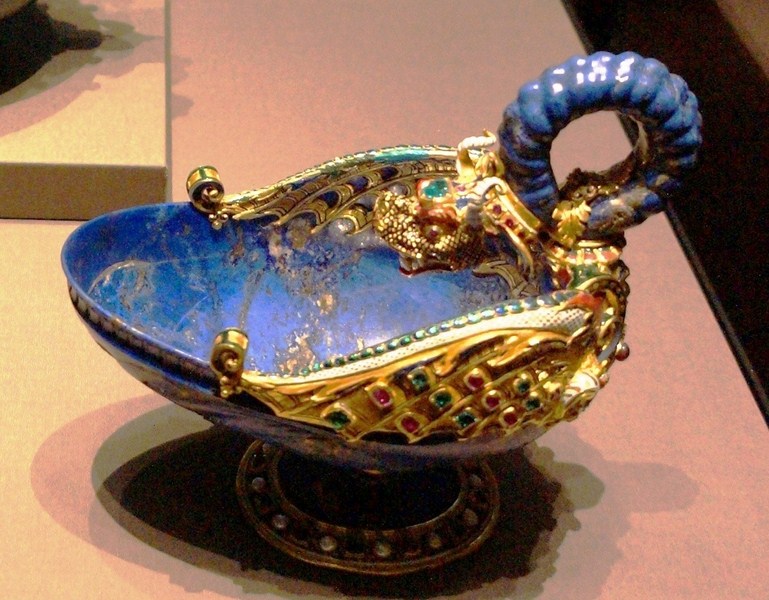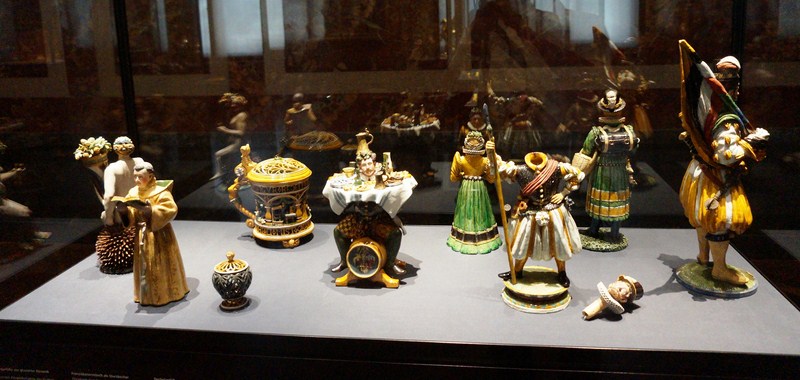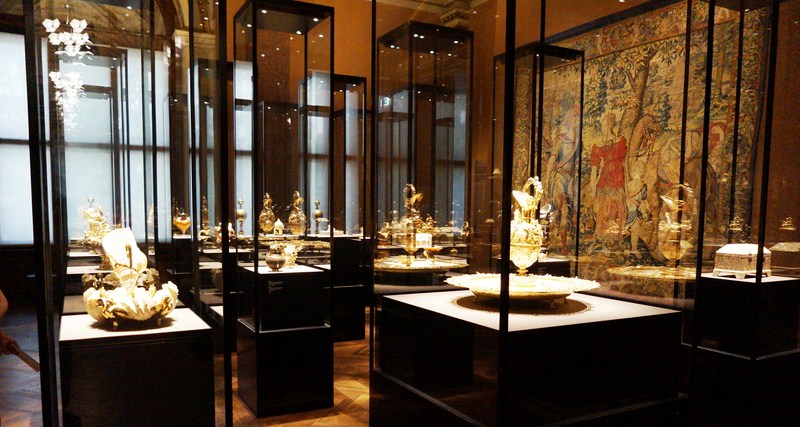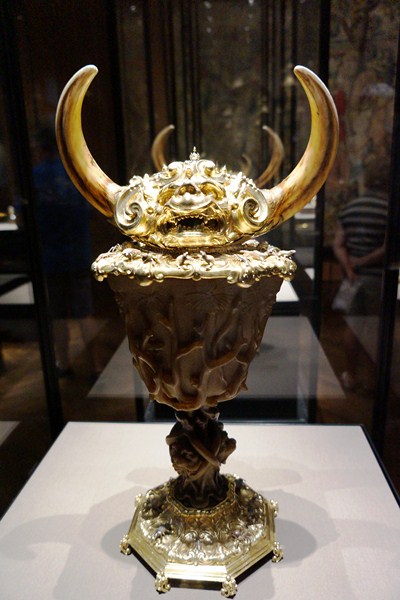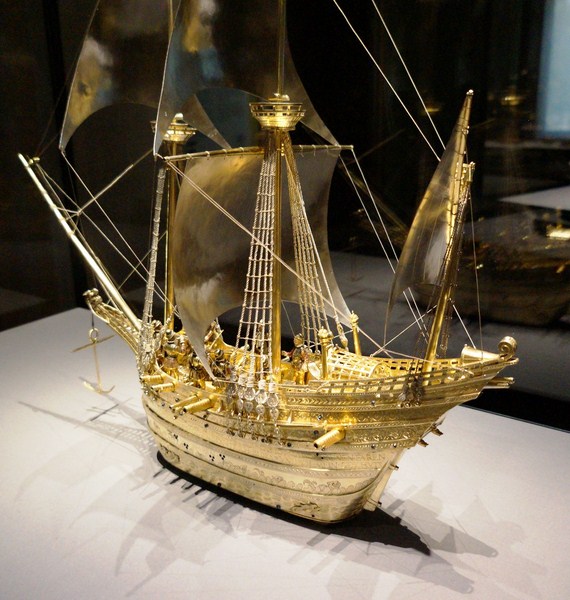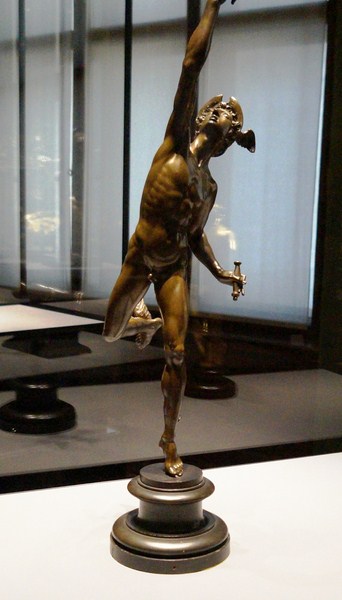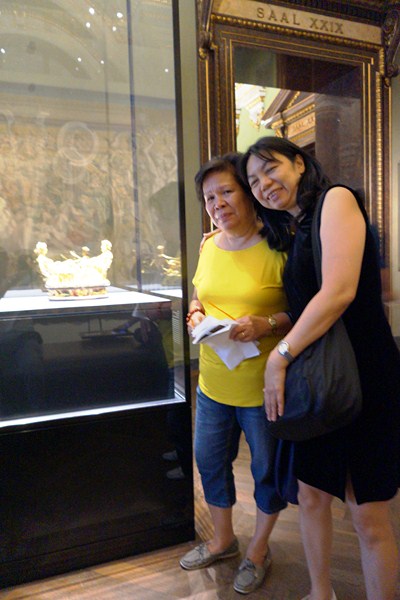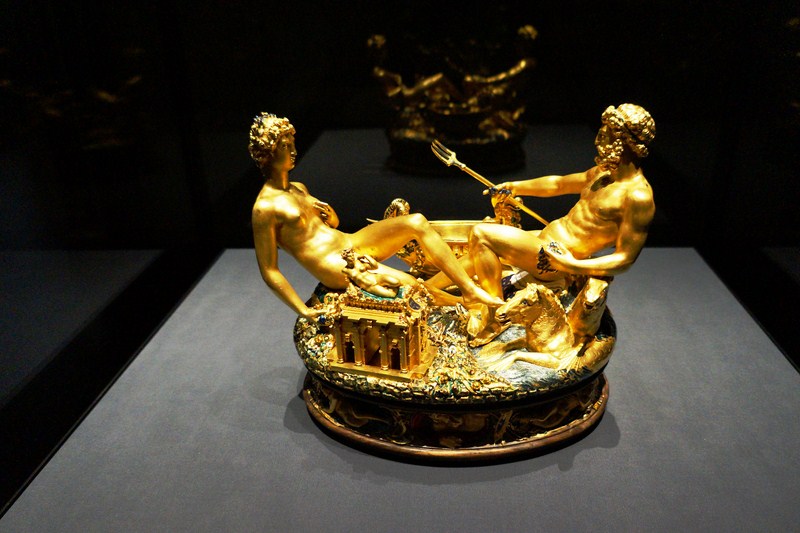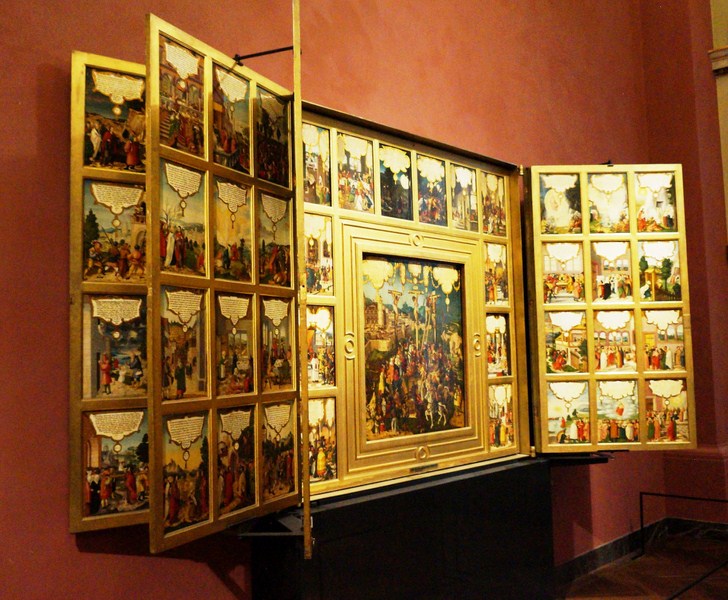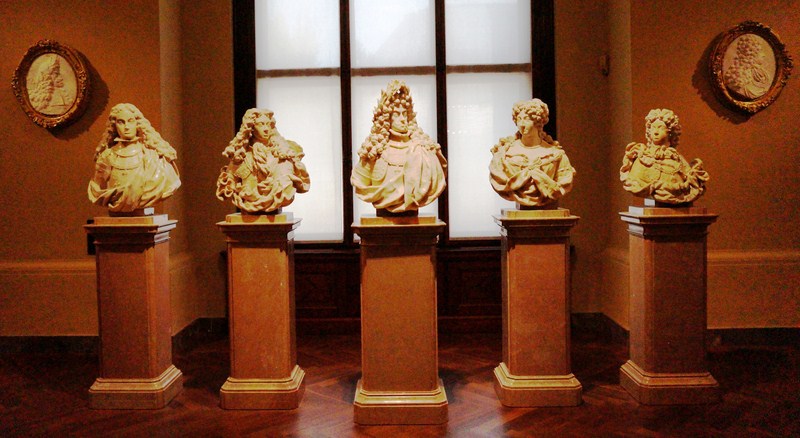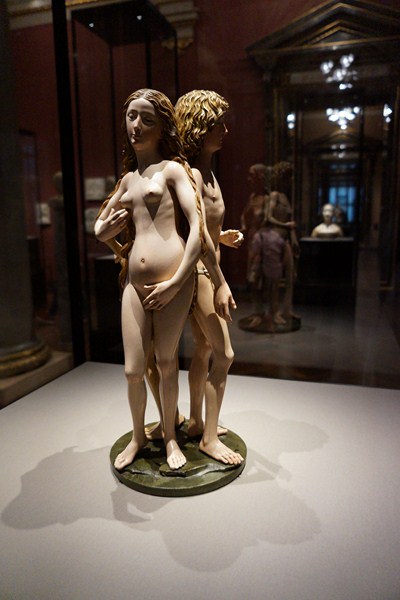Our combination ticket at the Neue Berg included entry to the Ephesos Museum and the much more memorable Imperial Treasury. This infrequently visited museum, an annex to the Collection of Greek and Roman Antiquities. may be hard to find as it is hidden away on the first floor at the back of the library section of the Kunsthistorisches Museum. It is essential to get an audio guide as the exhibits are labeled in German.
Check out “Neue Burg” and “Kunsthistorisches Museum“
The exhibition consists of statues, busts, reliefs, pieces of architecture and other ancient Greek pieces of art. Most of the artifacts are damaged or broken but they are very well organized and exhibited in the best possible way. Photography without flash or tripod was permitted.
Ephesos, one of the largest and most important cities of the ancient world, lies on the Aegean coast of present-day Turkey. With two million visitors annually, it is Turkey’s most-visited tourist destination after the Hagia Sophia and Topkapı Palace in Istanbul. It was here that the Temple of Artemis, one of the Seven Wonders of the World, stood. The city was also the home of Heraclitus, as well as of one of the largest early-Christian communities. In Roman times, Ephesos became capital of the Province of Asia, with around 200,000 inhabitants.
The museum was completely deserted as we spent time enjoying, without interruption, these vibrant and exciting depictions of gods, emperors and battle scenes in their purpose built gallery. This collection of largely Roman statuary and artifacts was apparently gifted to Austria by the Turks. The museum’s collection began when Ottoman Sultan Abdul Hamid II donated some of the archaeological findings to Emperor Franz Joseph I. Since 1895, Austrian archaeologists of the newly founded Austrian Archaeological Institute have began conducting research and excavating the ruins of Ephesos.
Between 1896 and 1906, a total of seven expeditions transported numerous recovered objects, their high quality probably equal to the Elgin Marbles or the Pergamon Gate, from Ephesos to Vienna by Austrian Navy vessels. With the proclamation of the Turkish Antiquities Law of 1907, the export of antiquities from Turkey was generally banned. However, archaeological digs, with Austrian involvement, still continue in Ephesos to this day.
For many years, the collection was provisionally warehoused and put on occasional display at the Theseus Temple (discontinued because of damage to the exhibits) in the Volksgarten (in 1911) until December 1978 when the Vienna Ephesos Museum was opened, in its present-day form, inside the Neue Burg section of the Hofburg Palace complex. Alongside the Ephesian artifacts, the museum is also home to architectural and sculptural cult relics from the Sanctuary of the Great Gods on the Greek island of Samothrace, which was explored by Austrian archaeologists in 1873 and 1875.
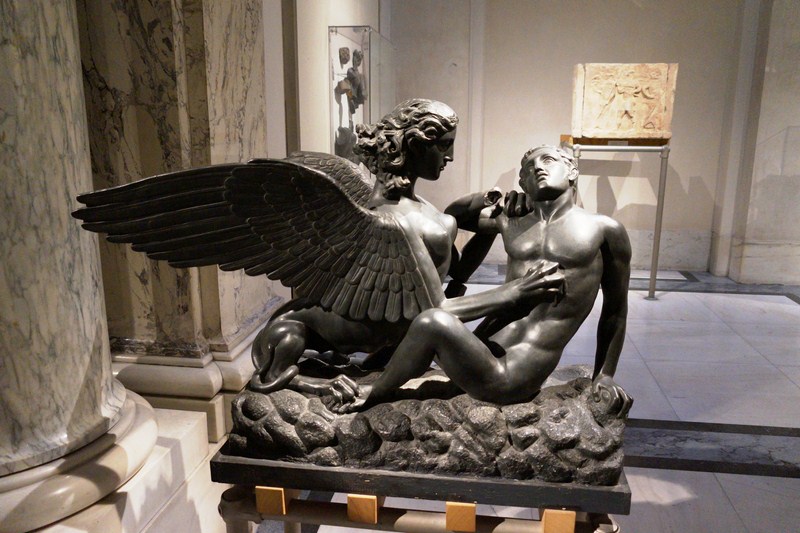
The Theban sphinx mangles a boy; Roman copy of a detail of the throne of Phidias’ statue of Zeus in Olympia. 440 BCE
We were presented with a representative selection of Roman sculptures that once decorated the’ richly decorated facades of magnificent ancient buildings such as the sprawling thermal bath facilities and the Ephesian Theater. The highlights of the collection include the so-called Parthian Monument; remnants from the late-Classical Altar of Artemis, including a sculpture of an Amazon; the bronze Athlete statue and the Child with a Goose.
Staircases lead, from the entrance hall, to a large chamber, containing the The Parthian Monument, a frieze celebrating the emperor Lucius Verus‘ victory over the Parthians. During his Parthian Campaign of 161-165 AD, the emperor established a camp in Ephesos. Unique in both its size and importance, the friezes have a total length of about 70 m., of which 40 m. On display. are a panorama of military scenes with brilliant depictions of battle, hunt, the art of riding and victory.
It was sharp and brilliant, as if quite recently carved. Its individual pieces have been arranged in the form of a monumental altar in five thematic cycles. As they were not found in their original state, this is only a guess at their correct arrangement. There’s also a model of ancient Ephesos, on a scale of 1:500, that makes it possible for us to better understand the objects’ respective positioning within the city’s topography.
The Ephesos Museum in Vienna serves as an ambassador for Austria’s intensive efforts in the interest of ancient Ephesos. Both the care of the ruins and the reconstruction and rebuilding of ancient monuments are also part of the Austrian researchers’ mission, and the Ephesos Museum provides an Austrian-based platform with which to represent their many years of work.
Ephesos Museum : Neue Burg, Heldenplatz, 1010 Vienna. Opening hours: Wednesdays – Sundays, 10 AM – 6 PM. Admission till half an hour before closing time. Tel: +43 1 525 24 4902. Website: www.khm.at. E-mail: info.ansa@khm.at.

